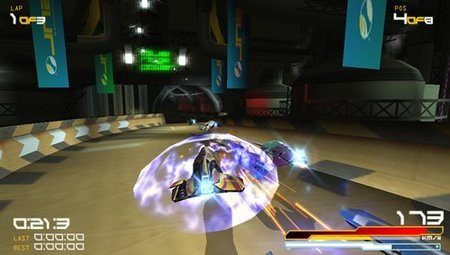
This article was supposed to contain short reviews of games I've played, but it seems I'm unable to limit myself, so some of them got quite long. Games are grouped by series or other relation (like genre); parentheses contain the version I've reviewed.

Futuristic racing game with shooting in it! Very clever way of handling difficulty - when you clear tournaments at a certain speed level, you unlock the faster ones. So newbies are forced to get good to be able to progress. Game is unforgiving - it's hard to make turns especially at the higher speeds, while the AI will of course make them perfectly unless an opponent intervenes. As if that wasn't enough, the AI also "cheats" by almost always having the same guy win the race (if you don't do it instead). Decent variety of cars, all with different statistics - though they don't seem to matter that much in the actual game. For example, the Speed stat just affects the top speed which you will rarely reach, and Shield is easily rechargable so a low one is not that much of a handicap. Weapons could be done better - there's the overpowered Quake weapon, while the Plasma is so hard to aim with as to become almost useless. And there is no way of affecting what kind of weapon you get, which IMO would be a great tactical addition to the game. The weapon symbols are also pretty unintuitive - you don't really know what you've got since they are just geometric figures - at least until those stick into your mind. They could have drawn an actual rocket instead of some green square or whatever (Lego Racers, a game from 1999, figured these things out already). It might seem I'm just shitting on this game, but in reality it is a good game despite the small flaws. Stylish, colorful graphics, nice animations, amazing soundtrack, unlockable cars and tracks makes this a staple. And of course it pulls you in, which seals the deal in the end. I don't even like racing games that much, and yet I've spent way too much time on this - so you don't need to be a fan of the genre to enjoy WipeOut Pure. Recommended.
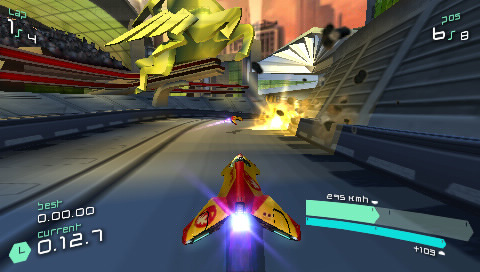
Sequel to the above, adding new modes (Eliminator mode, which focuses on destroying cars instead of actual racing, is super fun), tracks, cars (but removes the unlocks...), weapons, a loyalty system which can add skins to your favorite car, and a grid campaign structure. It also removes the cheating AI so that the same opponent won't win almost every race. This makes it easier to clear tournaments, though the unforgiving speed is still there. Soundtrack is a little worse than Pure's. Not much more to say - if you liked Pure, Pulse will not disappoint either. Note: GET ALL THE DLC if you want to try these games. Recommended.
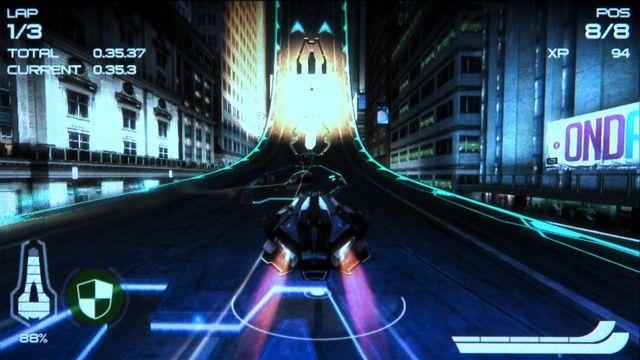
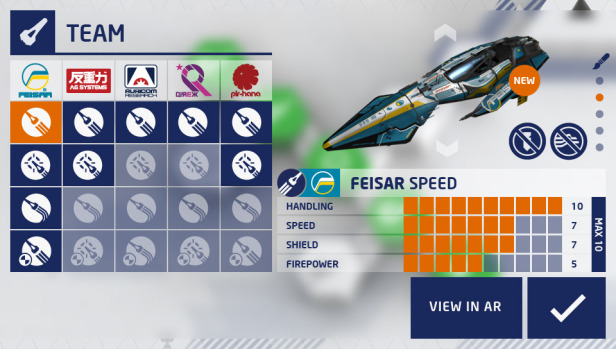
Unfortunately, a clear downgrade compared to the previous titles. Though there are some very welcome additions (track shortcuts, proper weapon icons, prototype cars with special features...), the negatives severely outweigh those. First of all, there is only the campaign mode! That's right - the custom race mode present in pretty much all racing games ever is missing for some reason. You'd think they would make the only available mode actually good then, but no. Only one car is unlocked at the start! In contrast to the previous titles where you could earn one of three medals in every event - here you can either pass an event (which for most of them is very easy) or elite pass it (often almost impossible - like for the time trials). Couldn't they have put something in the middle? What was wrong with the old medal system, anyway? How about if you have a problem passing an event at all? No matter, after a few tries a prompt will appear, asking if you want to skip it (what a joke - makes the whole campaign structure pointless). Another casualization "feature" is the pilot assist which allegedly helps you clear tough turns. We didn't need that in the previous installments, so why now? Your opponents are almost indistinguishable since they can even use the same cars, so the strategy of focusing on one opponent to destroy in Eliminator mode is pretty much gone. Soundtrack is worse than the previous games, too. The fun Wipeout gameplay is still there though, which is what saves this game in the end. Somewhat recommended.
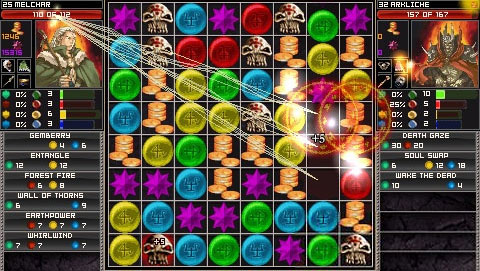
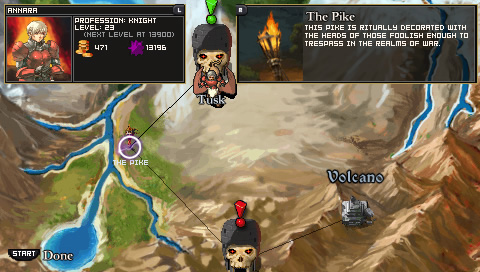
Candy Crush on steroids...and some really strong ones. Actually, this is a role-playing game where the fights are done through matching gems. It will really test your focus - forget about smashing through your enemies, at least for the bigger part of the game. Every opponent will require a different strategy - from the gear and spells you pick for the fight, to the movements you make on the actual board. There are four different mana gems which will add to their respective mana pools. The variety of spells is massive - damage, HP or mana recovery, gaining additional turns, destroying gems of certain color, and many, many others. Different classes get access to different ones. You also have to pay attention to the opponent's spells. A perfect example of the kind of thinking this game requires is the Troll - he has the Regeneration spell and will keep spamming it if allowed - you have to keep "stealing" his blue gems so he can't use it; otherwise he will just wear you down. The choice of items is another significant one - and the variety is just as insane, especially considering the fact that you can craft them. For that, you need runes which you get from beating enemies in certain places. The better the item, the harder the crafting minigame will be. The mechanic is pretty well balanced since the really strong runes only appear later; though, if you do it right, you will be unstoppable for the last 1/4 of the game or so (probably the game's biggest flaw - but try to find an RPG that doesn't suffer from it). As if that wasn't enough, you can also capture enemies and learn their spells if you beat them a few times (this requires yet another minigame). Don't forget that this is an actual RPG - we've just covered the fights but the overworld aspect is just as developed - quests, shopping, capturing cities, earning money, building, leveling up...you'd be hard-pressed to find a game with more depth. There is also quite an extensive story which seems kind of wasted on this game; though some of the characters are funny (Drong!) or mysterious (Darkhunter). Add to that nice, colorful animations and fitting sound effects, and you've got a gem of a game. HEAVILY RECOMMENDED!
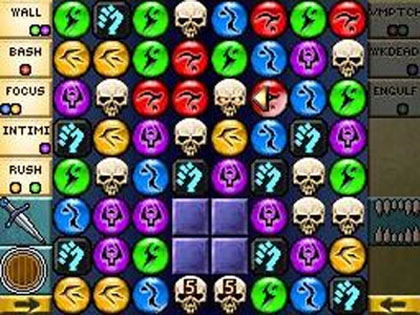

Forget about everything you've read above, because the sequel killed it. Puzzle Quest 2 suffers from all the common modern pitfalls such as casualization, hand-holding, equalization and simplicity (the bad kind). There is not that much difference in enemies anymore - at least in terms of how you fight them. Every fight feels the same and during the time I've played, I haven't ever felt in danger of losing. The addition of the action points mechanic makes it way too easy to beat up enemies, since you can just whip out your sword or whatever anytime if you've matched enough action gems. In fact, a good strategy is to simply ignore mana and skulls altogether and focus on the action points. This removes most of the depth such as "do I choose this spell or that spell" or "I need this amount of mana for this spell which will create an opening". Just get action points for your OP weapon and smash. The "tutorial" never ends since you get an annoying arrow showing you which gems to match. There is no punishment for illegal moves anymore, either. The original had a different stat for every type of magic resistance - here, they are all one - removing depth and variety. Quests are done terribly since the slight "open world" aspect is replaced by dungeons with a quest marker telling you where to go. And you have to use the menu to switch quests anytime you want to finish another one, since you need the quest marker to get around - in contrast to the original which allowed you to do many quests at once and you knew exactly where they are at any point in time. Forget about capturing enemies or using them as mounts - instead you get a shitty looting minigame. Gone are castle sieges and item crafting. Graphics, animations and the soundtrack all took a huge hit as well. In short: this is yet another example of a sequel that completely misses the point of the original, and ends up destroying everything which was good about it. Again, I didn't play it for long, so it's possible it gets better, but for now my verdict is to AVOID!
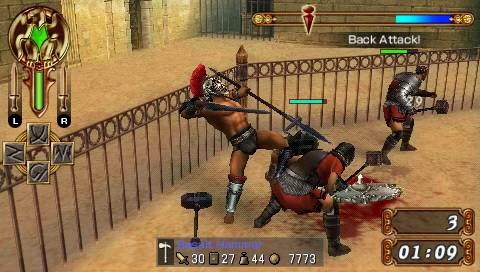
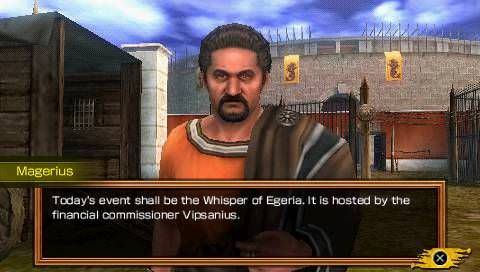
Welcome to the Roman Colosseum in a unique fighting game where you are a fucking gladiator, looking to ascend from slavery (and a one million debt that you apparently have by sheer existence). To accomplish this, you will need to perform in shows (really, fights) hosted by four different patrons to which you will be individually introduced at the beginning. Later in the game, you will be able to choose which shows to partake in - earning you that particular patron's trust, eventually allowing you to reject all the others and finish up your chosen patron's storyline. To counter a common criticism of modern games, you can just press the Start button to skip any dialogue if you don't care about it - but it is actually mildly interesting.
The game begins with character creation, with just the basic stuff like body type, skin color, head and hair style. Then, you get to distribute your stat points between Strength, Vitality and Endurance which will significantly affect how you play the game (don't worry though, you receive additional points after winning shows). The tutorial will introduce you to the basic controls, movement, equipment usage and the four different game styles. Gladiator Begins, despite looking simple, is actually very deep and suffers from not explaining things well enough, I think (and after getting it, you're already quite far into the game - though there is New Game+ that is actually worth playing). This could also be considered somewhat of an advantage, though; as it leaves more to discover for the player (I'd at least like refining objects to be explained better - I only figured that out at the end of the game pretty much).
So let us talk about the variety the game has to offer. First of all, the fighting styles: Single weapon (alone or with a small shield), Big shield, Dual weapon and Pugilist (using fists and kicks). All four differ in regards to your speed and offensive / defensive capabilities (for example, Big Shield style slows you way down but protects from most attacks that even a small shield can't). More importantly, you can level up the styles by using them, which will provide access to lots of unique skills that each style has in addition to the four basic movements (attack head, legs, left side or right side). You can knock off equipment which - funnily enough - can change the entire fight into "defend the helmet" since the AI opponents will usually be very eager to get it back as fast as possible. You can also change your style in the middle of the fight by losing your equipment, dropping it on purpose or picking something else up from the ground. Nothing prevents you from doing something dumb like using a helmet as a shield, either.
The equipment game is almost as deep as the actual fighting. Each item has three basic stats (Attack, Defense and Weight), but it also differs in range (hey, we've got spears here!) and the style which will use it (small versus big shield, or swords / maces etc versus stuff you put on fists). Equipment can be bought or grabbed from the defeated enemies (amount depending on how much your performance has satisfied the crowd - another big mechanic which would take some time to explain). These "stolen" items are usually better than the store-bought ones and you can find some blessed stuff there, which can be refined. Some of the blessed items will actually increase your gladiator's stats and by combining them with other blessed items you can truly create a Super Soldier. Mastering that skill takes some time, and - since you can bring your equipment back for a new playthrough - makes New Game+ a completely different experience.
The shows themselves consist of a few different modes - Team Battle, where you get another guy to fight with against others, Survival where you just got to live for a certain time; and Battle Royale where you have to be the last man standing. There are also some really tough boss fights and you can take their unique equipment as well as moves after winning. So, as you can see, the game is really fucking deep; and I didn't even mention all of it. The crowd pleasing mechanic, back attacks, combos, dodging, stamina management, positioning (which matters heavily in this game)...Mortal Kombat and Street Fighter can go hide in a corner with their shallowness.
What more is there to be said? The game is fucking amazing and has captured my full attention from start to finish which rarely happens these days. There is nothing bothersome against the graphics, soundtrack, and animations either - in fact, with seemingly hundreds of character and equipment models - the attention to detail is insane. You can even fight women which only appear as bosses and are actually some of the strongest ones; as well as a fucking elephant at one point in the game. In summary - drop everything you're doing and play Gladiator Begins right now! HEAVILY RECOMMENDED!
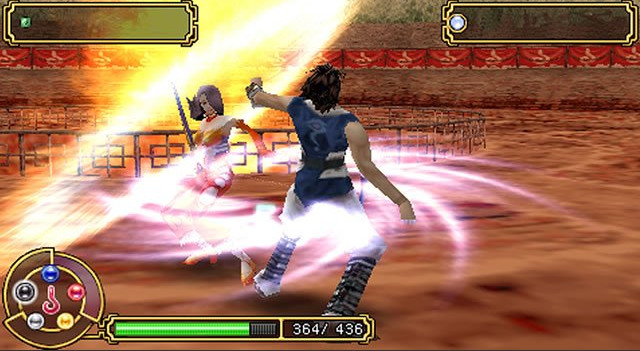
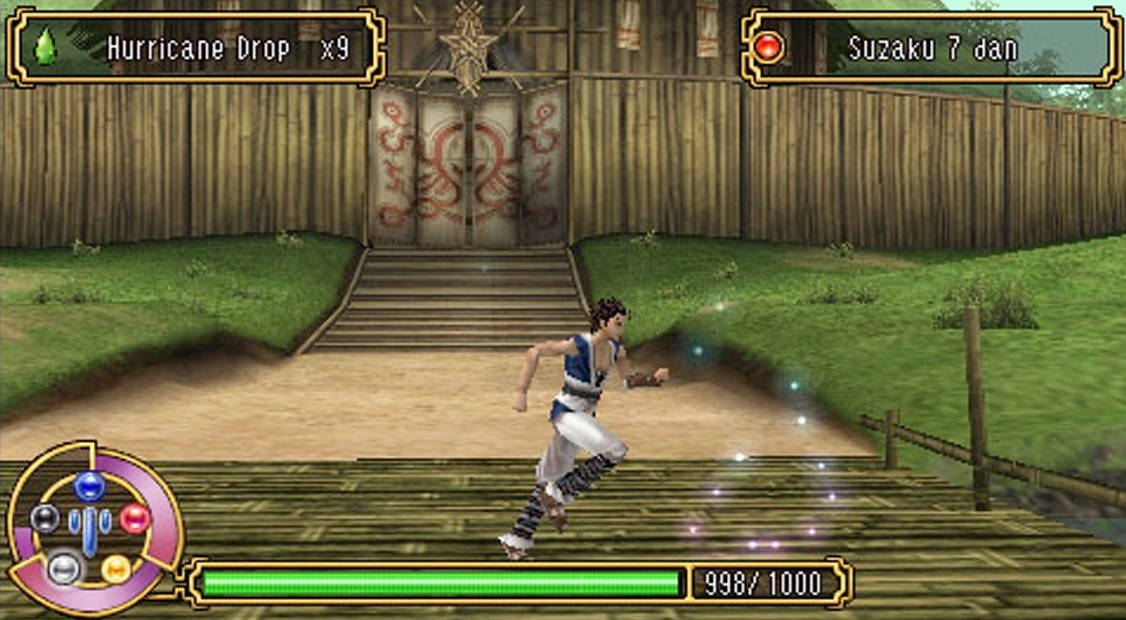
A samurai game! Let me jump straight to the best part of it - the combat system. During your adventure, you pick up Bugei (combos) and Kenpu (movements from which Bugei are made). To use a combo, you need all the Kenpu it consists of. There also exist a few Freestyle Scrolls where you can mix up all the Kenpu you've got - this is the best part of the game. Unfortunately, how this combat system fits with everything else isn't so stellar. For example, you can get an extremely strong Bugei very early on, and that kind of discourages further experimentation. Enemies have weaknesses, but that is never really relevant since they just aren't very strong. There are only a few fun fights (like the tiger boss) and the enemy variety is pretty underwhelming (for most of the game, you only fight regular samurai) and you beat all of them pretty much the same way. You can throw your sword, but it's useless except for the single boss specifically made for that gimmick. Kingdom of Paradise is extremely easy, and the Chi Arts (special attacks hitting a wide area) just further break it wide open.
How about non-combat related things? Voice acting is high quality, movement animations are amazing, decent soundtrack. Lots of dialogue - even regular NPCs have several different lines that change across the game. As for the bad stuff - lots of places that you should be able to enter, but can't; how dare I go into this patch of grass that the developers decided is off limits. The game is extremely story heavy - and it's very confusing, almost as if the designers tried to tack on every little thing that came into their mind. Even at the end of the game, I still didn't feel like I got what it was really about. But I'll let you judge it for yourself. It can be hard to progress in the game in certain cases, because you often need to talk to random people a few times in a row. Items are pretty useless aside from the end-game where there are lots of status-inducing enemies; enough potions can be picked up that you don't need to worry about buying them. A certain NPC mentions that you can freely pick up stuff from barrels in towns - but he forgot to mention those where the inhabitants randomly put bombs in (how do they access the stuff in them, then?).
All in all, Kingdom of Paradise is pretty underwhelming. The Bugei system along with the animations and voice acting carries it. It's disappointing, because the concept is good and I think the devs could have done much more with it. How about let me jump wherever - if it looks like I can reach there, I should be able to. Have enemies which require specific Kenpu - maybe some high jumping ones or ground ones like snakes. Don't just make everything beatable with a single Freestyle Scroll. Put more status-inducing enemies - maybe even traps. Let me play more defensively, if I want to; instead of just clicking the block button - have dodging moves, counter-attacking moves, etc. The samurai style is extremely fun - but you can't just ignore the obvious possible improvements. Clean up the story - it had potential - but clearly tried to do too much while not making it well understandable. Make the game longer - though it buries you with story, you barely have the opportunity to get attached to the characters. I was considering giving this game the Not Recommended rating, but that would be harsh when a turd such as Class of Heroes also got one. Though Kingdom of Paradise does not have glaring flaws - it lacks enough redeeming qualities for a recommendation, either; therefore, the rating is Somewhat recommended.
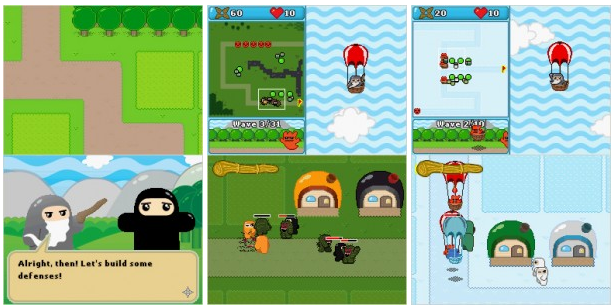
Demons are trying to get your cookie recipe and you absolutely cannot let that happen! To accomplish that, you build Ninja huts and let the Ninjas destroy the enemies looking to get through. Sounds simple but there is quite a bit of depth in this game - lots of variety in Ninjas and demons, with different kinds being more effective against certain types of enemies. You get cookies for every killed demon and can use that to upgrade the buildings or buy new ones. Then there is the strategy of where to put which kinds of Ninjas - for example, you don't want the slow, strong ones right where enemies appear, since they will just skip them. Instead, you put the fast ones first, which will make the demons stop to fight - then the damage-dealers can come to beat them up. There are also power-ups you can use in case of emergencies, when your Ninja army just isn't enough. You get rated for your performance at every level, and getting the best rank can be quite tough. On the later levels it requires careful balancing of the amount of buildings versus their strength (one super powerful ninja isn't going to do much against a wave of demons); good resource management (gotta save up sometimes), good timing (do I build the ranged ninjas this turn, or can they wait?) and placement. This adds even more depth for "hardcore" players who want A rank everywhere. Visual design is nothing to write home about, though it's at least colorful and kind of humorous. On the other hand, the audio is just annoying. There's also a little too much focus on not-very-interesting story stuff. Whatever, the game is fun, varied and challenging, and I still recommend it. Somewhat recommended.
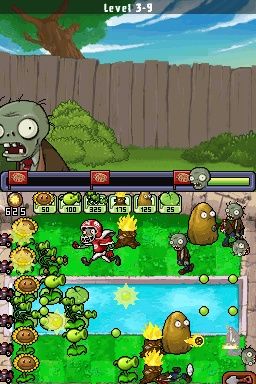
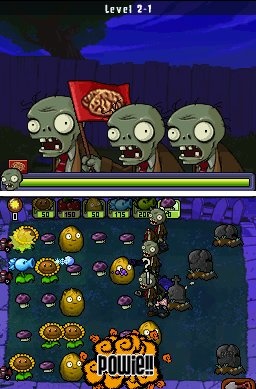
Similar concept to the above - zombies are invading and you've got to rely on your plants to stop them. That is where the similarities end though, because the game is very much inferior. First of all, all the action happens on one screen, instead of Ninjatown's...well, town. This is similar to the difference between 2D and 3D shooters - regardless of what the former does, it just won't recreate the benefits of the three dimensions. Though Plants VS Zombies does try - there are lots of plant and enemy types, and later levels introduce nighttime or different terrain. But the depth is still not so great especially with some bad design decisions that the game makes. Sunflowers are the only way to earn the currency required to buy plants, so any level will start with trying to plant as many of them as possible, as early as possible. Until the zombies start appearing, then you switch to the 100 Sun costing pea shooters, or the free Puff shrooms (which actually do the same amount of damage...though the range is shorter) when you get them. The developers seemingly tried to combat this by introducing enemies such as the mirror-holding zombie - or the pole vaulter which can jump over plants, but it doesn't do enough. At least all the levels from the first two worlds are beatable by this simple strategy plus a well-placed bomb plant if you get in trouble. You can safely ignore many of the fun plants such as the Chomper or the Hypno-shroom.
Another bad design decision is the requirement to wait between buying plants of the same kind. This is just a fake way to increase difficulty - similar to shooters just adding more HP to their enemies - because it was clearly beyond the devs to require actual strategy to beat the levels. There is also no rating system to reward more hardcore players. The game clearly does have a soul in it - the enemies are well designed, have humorous descriptions and funny voices (Brains!!!), plus it doesn't bother you much before jumping into gameplay. All in all, Plants VS Zombies can be fun to just whip out for a few plays, but don't expect too much from it. It's so sad - it seems trivial to improve this game - simply make the fun plants actually required to win, instead of being able to rely on just the basic shooters. Edit: long time since I've cared about games, but I was rereading this and decided to bump up the rating. There is only one significant flaw in this game, which otherwise is really solid - and much better than trash like Class of Heroes which I gave the same rating. Therefore, Somewhat recommended.
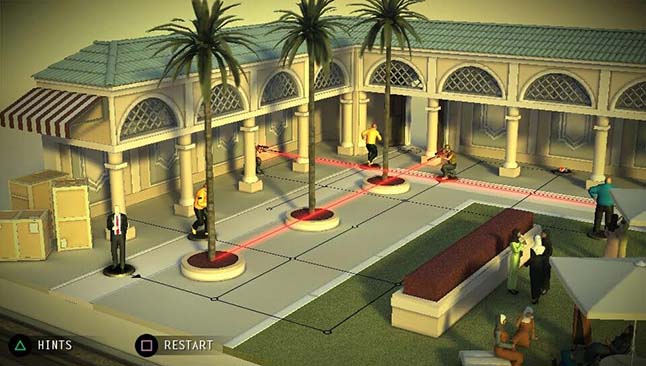
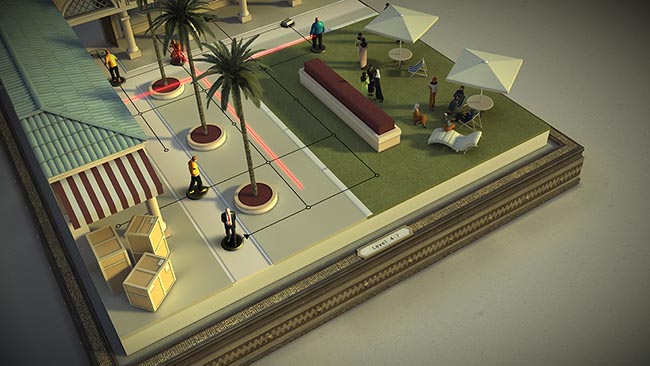
Agent 47 is back on the Vita! Except this game has very little to do with the actual series. You take turns moving your piece through a board and your objective is to either reach a certain spot, or kill a target. Already here we find the first hiccup, which is that turns work inconsistently - usually, you move first and all the enemy pieces after you (so your action takes precedence). But if you step on a teleporter, an enemy can move in and kick you out before you are able to teleport (his action taking precedence). And, if your move would get you killed by a laser guy, but an enemy would block it in the same turn, you won't be killed (both actions taking place at the same time). None of this is explained anywhere and can only be found through trial and error - which is how most of the game works as well. During the first 4 worlds there are precious few levels where you have to do any thinking at all. The fifth and sixth one, as well as the ones based (very loosely...) on Silent Assassin and Blood Money are somewhat better; disguises appear more often and there are more levels that require you to actually stop and think. Autistically counting turns is also required less often. Too bad that you unlock these sets only after completing the first 4 worlds, when you might already be bored.
Every level except the first few has two additional challenges like "don't kill anyone" or "reach target in X turns or less", for which you get additional points that help unlock the next worlds. The problem with this is that often, there's only a one step difference between the two "solutions" - so you have to replay a level just to make that one move differently (cheap way to artificially lengthen gameplay time). To say something positive about this game - it does the "tutorial through gameplay" thing very well. Not a word is ever said while new mechanics are introduced, and a level usually focuses on only one of them, letting you become familiar. There are different types of enemies like the "bouncers" that don't move until you come close to them, the runners, the dogs that follow you through the level, etc. Some other fun mechanics include guns and disguises, which allow you to bypass a certain type of enemy - unfortunately, this Hitman staple only appears for a few levels - what a blunder! Anyway, that is where the good news ends. There's no soundtrack to speak of (except the few times they play Ave Maria theme lifted from Blood Money), animations are basic (they couldn't even show 47 Fiber Wiring a target?), graphics something out of Windows 98, sound effects limited, no story, no depth. All in all, this is a mobile-tier barely-a-game which claimed the name of Agent 47 to increase sales (expected, since it was actually made for mobile first). Could be fun to pass a few minutes while waiting for someone, but if you expect something more than you would from Candy Crush, then prepare to be disappointed. Not recommended.

The "game" begins with a scientist running around for half a fucking hour, talking about some useless shit, asking dumb questions and annoyingly "breaking the fourth wall". Then, when you can finally begin to control your character, you walk up to a sheep which starts doing damage to you even though it doesn't even look like an enemy. And "your" character fights it without your input. Now you're at low HP and the scientist complains. So you've got to avoid the enemies while you go to wherever. And that's when I stopped playing. There might still be a good game hiding behind this nonsense, but first impressions matter, and Contact doesn't make a good one. AVOID!
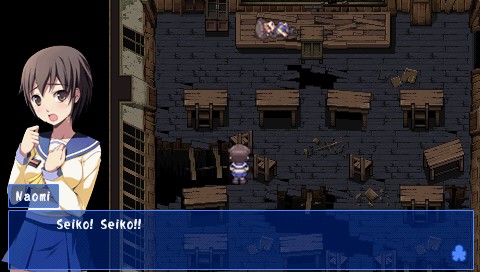
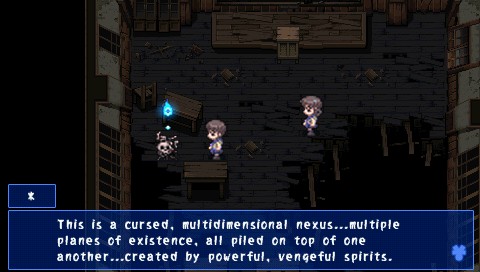
A showcase of how not to do game development. It begins with talking, talking and more talking that isn't interesting at all and could fit in three times less words. Oh, something came out of the door! Is that a ghost? Is this where the action begins? No, it was a student making a joke. And all the lead up suggested it was a ghost...this would have been such a good opportunity to end the damn talking and get interesting, but it was wasted. And now, more useless talking. Then, you get introduced to all the other students - the worst possible way to present the game's characters; and you probably won't remember any of it. Finally, I can control my character! Okay, let me walk here...fuck, something interrupts me. Let me guess, it's more fucking talking. I've stopped playing when this multiverse shit got revealed, since in addition to all the other crap in this game, I just hate this trope. There is no soundtrack or anything at all to keep you engaged. As usual, it's possible the game gets better later, but I won't get the "opportunity" to discover it. By the way, I don't hate visual novels - Corpse Party just happens to suck. You will see later how a good one differs from this. AVOID!

I can't get caught... Not like this! Gotta find someone to pin this on... someone like... him!
Not only are you thrown in the middle of a murder right at the beginning of the game, but it's also your friend that is being accused - and your job, as a rookie defense attorney, is to clear him of the charges. I can't think of a better way to start the game if the goal is to get someone "in the mood" - and as Contact shows, first impressions matter. After the introduction, you get to talk to Mia (your boss), who tells you she's impressed that you're taking on a murder trial so early in your career. See? This is the game telling you shit is serious right at the start, which - along with the perfectly fitting soundtrack - keeps you focused. Then you meet up with your accused friend who's crying, since it's his girlfriend that was killed. That's it, two main characters quickly introduced through gameplay, and we can begin the trial. Your friend tells his version of events, the prosecutor says he's lying and summons a witness - who is the actual murderer. Here you learn how to challenge the witness' statements and use evidence to disprove them - tutorial done through gameplay, the holy grail. When you make the correct challenge, the witness will get visibly anxious and modify his version of events, until that is untenable and he's either kicked out or convicted of the crime if he's guilty. Okay, you won the first case, what's next?
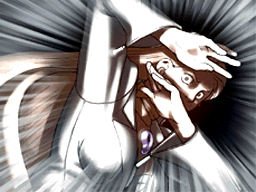
The pressure is on! Your boss got killed and the name of her sister was written with blood on a piece of paper near her body. So now your task is to defend the sister from the charges. Here you will learn the second part of the game - gathering evidence from the crime scene and by talking to people. You get introduced to another two of the main characters - Maya, your boss' sister, and Detective Gumshoe. Now Phoenix Wright becomes a true adventure game of "go here, talk to this guy, go back, show the other guy this item". But it is kept engaging all throughout. In fact, if you're looking for a game that impacts you emotionally, you cannot get better than Ace Attorney. All of this is supported by an amazing soundtrack that somehow always manages to fit the situation, great and often funny animations, well designed characters and dialogue, immersive stories...This is how you do visual novels, my friends! You'd never think a game inside the courtroom could be so fun. Now drop everything you're doing and go play this fucking game! Edit: actually, I think I'll be dropping these a level. Despite them being fun and well-made, I think they're just too barren to earn the best rating. So, changing it to Recommended.

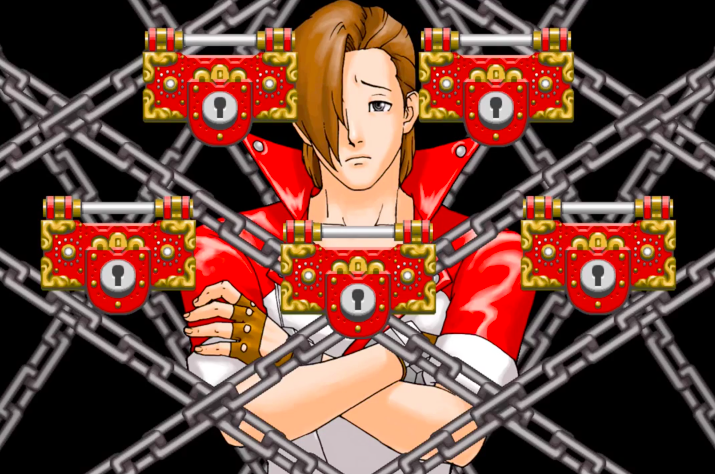
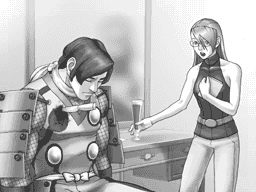
Replayed this again. Case 1 is kind of boring but it does introduce the mechanics well. And, I like how Phoenix lost memory at the beginning, since it provides an explanation as to why things even have to be explained. Case 2 is great, and lays the foundation for the entire story of T&T. Though, at one point, you had to press all statements and then admit you don't have evidence, which was kind of counter-intuitive. At that moment, Franziska's over-confidence was the only thing that allowed the trial to even continue, as the Judge thought the case had already been decided and there was no more need to listen to testimonies. There should have been a better way to handle that situation, especially since at least two of Lotta's statements were obvious dead ends, so there was no reason to press them. Some time later, Franziska again decides to continue the trial when she could have ended it...I guess she didn't want the win badly enough. And that's my only gripe with this case.
Next comes the weirdest, dumbest, saddest, most tragic and pointless case in the entire series. Everyone hates it, really...but not diggy :D. Hey, if you read my site, you should have already figured out how much value "popular opinion" holds. And as usual, it has totally missed the mark here, because the Big Top is the best in the entire series. It does a few things no other case dares to, which is what even makes it noticable among the pile of "regular" cases (even for the people who hate it). But I don't want to spoil the greatness of it, so I won't reveal any details; let's just say I had to stand up and walk around to process the emotions this case has given me a few times - which I rarely do otherwise. EDIT: changed my mind (hover to unspoil):
Anyway, I feel like I have to explain just why Big Top is so good, and why the common criticisms fall flat. People complain about Moe and Ben being boring, unfunny, etc. But that's how it's supposed to be! Did they miss the part about Max being hired to fix the circus' quality? If the other performers were great, there wouldn't be a need to fix anything, and the whole case would have no basis. Moe himself says that after 20 years, his act is getting stale
; it seems the critics just weren't paying attention during the game.
Next, Max fulfills the role of "defendant you're supposed to dislike" very well. His arrogance seems off the charts at first. He is disliked by all other circus members and even gets into fights with them. Later, though, it's revealed to have an empathetic basis since he really took his act to heart, and was annoyed the other circus members didn't care as much as him. Quite an interesting development for what seemed to be a simple asshole at first.
Another thing people complain about is the "love triangle" with Regina. Don't they really see it's simply a setup to show her as being oblivious? Since she doesn't seem to have figured out that Trilo isn't a real person. And her being oblivious later provides an explanation as to why she put that note on the bulletin board, and didn't realize it was actually meant for her. This is how she was able to avoid getting killed in place of the Ringmaster. And, her charm explains why Bat even simped for her in the first place, leading up to the disastrous events of this case. Everything has a point if you just pay attention.
Now, Acro is another character that fulfills his role - that of the sympathetic villain - perfectly. People complain that Regina being oblivious wasn't a reason for killing her? Was Godot justified in killing Misty just because she looked like Dahlia at that moment? Was von Karma justified in killing Gregory just because he gave him a penalty, ruining his perfect record? But yet, those kills happened - and if they didn't, this game series wouldn't exist. You can also find much more petty stuff people kill each other for in real life. Acro did actually have a better reason for murder than most others, since it was revenge for losing his own brother. Don't forget he was also injured in the same accident, so had an additional reason to kill. And yet, he ended up being a villain that can't even be happy about what he's done, since he not only didn't kill the person he wanted to, he didn't even manage to cause any bad feelings for her. Again, Regina being oblivious fits here very well.
This case is supposed to be tragic! And it does its job perfectly! It feels like none of this had to happen, and yet a tiny seemingly harmless dare set off a chain reaction of doom. Consider how the circus had enough of its problems already, and then they suddenly got a murder to deal with. A murder of the most important person working there, and also the nicest and least deserving victim. And, the person that was killed wasn't even the one that was supposed to die, adding to the tragedy. Worse than that, the killer actually loved his victim, so much that he considered it his life mission to repay him. Then - at the end - Regina got dragged to the trial and had her innocence ripped apart, piece by piece. This is the only case in the series where I felt that everything has been destroyed...and for nothing. After all, the circus lost not just the ringmaster but two great performers (Acro and Bat), and well, the atmosphere has probably been killed forever. Though at the end the characters are forcing themselves to stay positive, I feel like they are just coping. I also like that the case doesn't drag itself for too long and there aren't any moments where you have to do something arbitrary or nonsensical. Even the bust thing - though it stretches physics - is pretty obvious in the end. I am actually surprised the devs put so much care into a case that isn't related to the main story at all. I guess the main reason Big Top is my favorite is the sheer amount of tragedy stuffed into it.
After that comes the beloved last case, which I guess rivals the first game's Karma case in quality. Blah blah, who cares - it's all about the amazing Big Top that came before it. Don't get me wrong, it's still a nice finish to this game - it just doesn't strike as hard as it should have. It does have something unique and interesting, though - namely that your client is guilty of hiring an assassin to remove his rival, so for the first time up until this point, you are forced to drop your "always believe in your client" principle. Oh, and I almost forgot about the excellent Core 2002 theme that plays during the reveal. And yeah, there are only 4 cases compared to the first game's five. But, enough quality has been stuffed into them that this isn't actually the big issue it would seem like, at first.
Aside from that, two great new features get introduced. First - the Psyche-Locks, which appear when someone's trying to hide a secret from you (and you can break them to reveal it). This ensures the player actually pays attention to what's going on in the story, else they won't be able to progress. And second - being able to present people's profiles in addition to just the evidence pieces - which simply makes sense in a courtroom game ("hey, it's this guy that was there!") and makes me wonder why it wasn't there in PW:AA already. It also brings with it quite a bit of additional dialogue; you can ask anyone what they think about a certain person, which is sometimes required to progress. And so, I'd say this game is a mildly significant improvement over the first one, but not enough to send it to the highest tier (which I'm not actually sure if any game in this series can reach, even in principle). Therefore, Recommended.
Unfinished, might not be in near future.
You should know the drill by now. This is probably the best entry in the entire series, with the highest floor for case quality - even the intro case isn't just a tutorial to drag yourself through and promptly forget. This game really decided to ramp up the tension compared to all the others, which I really like. In the last phase of case 2, you get to choose one statement from 11, and if you pick the wrong one, you eat a full bar penalty and the culprit walks free. That will make you pay attention during the proceedings, ha ha! Case 3 does it even better, with the culprit's entire testimony section giving you penalties for bothering him with bullshit, because he's really late for that bus already, and youse payin
! In fact, he's only in court because the mighty Godot managed to drag him there; the Godot who's built up to be the "cool" character of the series - and well, he is cool. He's not intimidated by anyone's tricks and has like a hundred quotable quotes. This game has seemingly the widest set of characters - ranging from cringe, funny, scary, insane, insecure, manipulative, simpy, and combinations of those traits. Devs really cranked up the character design to the max here. I guess it's expected since T&T was supposed to be the last entry in the series. But of course, they smelled the success and went and designed further games, like with Pokemon.
Anyway, I really liked case 3 but saw some holes in it, like why did Viola even allow you to snoop around the stuff in her office. Maybe it could be explained by her not really wanting to protect the culprit deep down, but that's stretching it. Then during the trial, the culprit admits he was in the restaurant because he had a box of matches with their logo in his office. I can think of at least one way to explain it, namely that Viola brought them in, or maybe some of his clients left their own there. I felt like there were a few other times he ran his mouth pointlessly, too - but maybe that's just his thing. Even though his crime was planned and executed amazingly well, he was just too rash during the actual showdown. I would have enjoyed an Alba-like marathon, to be honest - but I guess you can't expect a tiger to be able to restrain itself too much.
There is one more interesting thing about this case, namely how was the culprit able to impersonate Phoenix Wright originally? Doesn't he look, speak, do everything different? That's what the surface level thinking would tell you, anyway. But if you look at real life, people keep falling for all kinds of scams, even really stupid ones. If you read this site, I'm sure I don't have to give you examples. If you limit yourself to impersonations only, then still, popular people have body doubles. Everyone has fallen for the Stephen Hawking scam for a very long time, funnily enough. I wouldn't have even suspected him to be a fake, if Miles Mathis didn't blow it wide open. Anyway, it's not so insane to me that the culprit was able to impersonate Phoenix Wright with only superficial similarities. A lot can be explained by having a tan, or just being rusty, etc. For me, this gives the case yet another layer of depth (that the devs themselves didn't necessarily intend), namely exposing just how easy it is to fool the masses if you put in the minimum of effort. And how unlikely people are to stick their heads out to challenge the common group belief and possibly embarrass themselves.
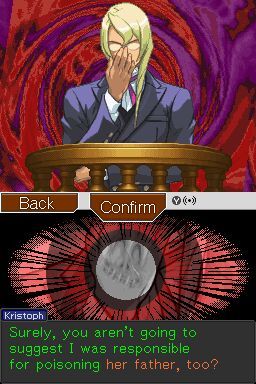
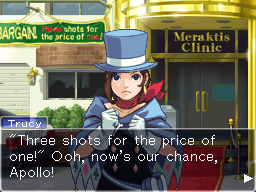
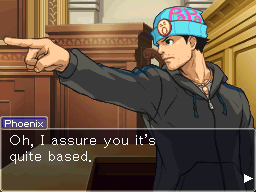
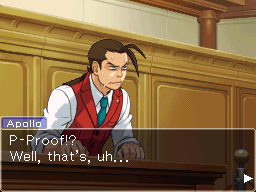
I'll throw it straight out - compared to the Phoenix Wright Trilogy, this game is a total disappointment. The protagonist is about as interesting as Linux distro wars. Not only that, they don't even let him really use his signature Chords of Steel - wouldn't it be cool if we could scare the witnesses or even the prosecution into submission sometimes? I mean, AA isn't supposed to be a super serious simulation of courtroom proceedings - so let's have some fun (that they did have with obnoxious Phoenix objections or bluffs during the Trilogy, or Franziska's whips, etc). The first case has Phoenix steal the spotlight from our new attorney almost completely - and the case itself drags on too much for a tutorial and has Phoenix too high and mighty. Second one has the annoying Wocky Kitaki, the student guy whose name I forgot and an even worse Ema Skye to deal with (just let me investigate, no one cares about your "muh science" shtick or your chips addiction - you're not important). Not only that, but you have to do a bunch of arbitrary shit to progress that is actually hard to figure out (in a tedious, not interesting way). In the third case, the prosecution tries to pin the blame on a kid where it's obvious he could not have done it - I mean the game itself tells you that when it says you need strength and experience to even be able to use the murder weapon without seriously injuring yourself. Yet almost the full case is wasted on this dead end.
The full amount of cases is 4, and you'd think that at least the last one would rival the Trilogy in quality. But of course it doesn't even come close to doing that. Though it does resolve the stories of the important characters, it's not very interesting in itself (but opens the door to the much better DD / SoJ). The most interesting thing about it is how you're able to switch between the present and the past for your investigation. Predictably, Phoenix steals the spotlight from the useless Apollo again. The trial part is absolutely terrible and ends on a low note with the main antagonist freaking out about the stupid jurist system (he goes down meekly considering how calm and analytical he seems). A new feature is introduced which allows Apollo to watch for "tension" in witnesses and call them out on it, revealing new information and progressing the trials. Problem is, it's implemented terribly - the game tells you which testimonies you have to "perceive" (but still have to guess the statement). Then you play a "minigame" of watching a close-up of the witness and trying to find their nervous habit while they're stressed. Often, the tells are completely irrelevant to the character's personality - for example, Spark Brushel just randomly sweats instead of doing something with his brush or nose. A better way to implement the feature would be to have the tension visible in the main sprite. So is there a positive about this game? I guess there are a few good characters like Klavier, Trucy and Kristoph. Actually, forget it; I only really like Trucy. Klavier is okay, and Kristoph isn't all that.
UPDATE June 2023: I haven't played video games for about two years, but somehow got inspired to replay this now, because the stories still excite me - or so I thought. And I was looking to screenshot some quotes. But I got reminded again how terrible this game is, and couldn't even come close to finishing it. How the fuck did Kristoph let himself get fucked so easily in the first case? He acted like a rank-and-file criminal, instead of the big villain he was supposed to be. He only got suspected in the first place because of using the phrase bone china pate
allegedly in reference to the victim's bald head. But I just know that Manfred von Karma or Godot would have never let something so small be used to indict them. Of course, Phoenix later introduced fake evidence into play and Kristoph screamed like a child, then fucking let that slide. Again, no way Karma would have let Phoenix off the hook for that. The weakly written or just annoying characters and the arbitrary things you have to do to progress got apparent once again. And the deleted ability to present profiles; holy shit, let's make the adventure game even more short on gameplay than it already is! Also, the Psycho Locks only appear in the last case; which has 7 of them, compared to e.g 15 (breakable) of T&T and 12 of JFA. In those games, they start early; this is a great decision because they enforce paying attention to stuff that happens and getting immersed into the world - instead of just pressing buttons. Well, I've ranted enough. This game is terrible, terrible, terrible! Skip it and play the Trilogy (Switch version has updated visuals and is the one I recommend these days) which I'm probably going to do again, too. Not recommended.

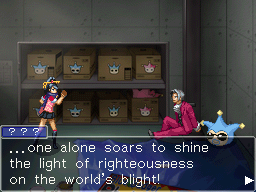
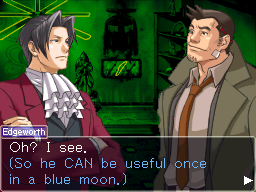
An Ace Attorney entry made into a true adventure game, where you walk around, examine stuff, talk to people, etc. in an actual interactive world. Hey, there is no more Phoenix (you play as Edgeworth) - so if you were getting tired of him, you will feel right at home. There are also no courts, but you have arguments "in the wild" in a similar manner. AAI introduces some of my favorite characters (Lang, Kay, Badd) and features (Logic, Little Thief). I even love its overreaching story which neatly joins all the cases - something I feel no other game in this series does to this level. Yet I still have mixed feelings about this game, just because there are clearly many loose ends surfacing when we actually play it. Often, you have to press arbitrary statements so that a similar one appears, instead of presenting evidence that should have already sufficed (but there is nothing even close to the bullshit of the Machi dead-end from Apollo Justice, don't worry). At one point, you even had to do this twice in a row.
The cases can get confusing - especially case 3 with the switching sides, etc. In case 5, we somehow never get to examine a map of the entire place (the way we did e.g the Gatewater Hotel in JFA) - which again, makes that case somewhat hard to understand. Annoyingly, the building contains an elevator, but we never get to investigate it - even though later we learn that one of the guilty parties used it; and we even get to pick it as a "place we missed" at one point (and lose a life point if we do so...). I won't pretend that this game is easy to beat without a manual. I still love case 5 though, with the seemingly untouchable villain that tries every trick possible to stick around and stays sure of himself right until the end. It is also the only villain that cannot be beaten with exclusively regular methods.
I was too rash in my pronouncement of this game as being better than T&T at first - though it probably is better than JFA. It is very ambitious with the added features (that are also well executed) and a mild genre switch. The first case received more care than in any other game, too, with an actually interesting antagonist - but the kidnapping case is not that great. In fact, I feel like none of the cases in Investigations reach true greatness (the level of Big Top, Manfred von Karma or the last case of T&T) - so other things end up having to carry it. Like the fact that you can get multiple bad endings if you waste your entire "lifebar" by doing bad logical connections or presenting irrelevant evidence (or making the main villain too impatient at one point). Regular PW games have only one bad ending - that of the judge slamming the gavel and screaming Guilty!
. Another advantage of Investigations are of course the added mechanics and being able to move around the world. The game has a great soundtrack as expected from the series (every theme fits its character perfectly, really; my favorite is the Lang one I guess). Still, AAI fails at reaching the peak (in the end, I think it loses slightly to T&T in overall case quality, character quality, and soundtrack - though it does have the lack of filler cases over T&T), so it has to settle for the rating of Recommended.
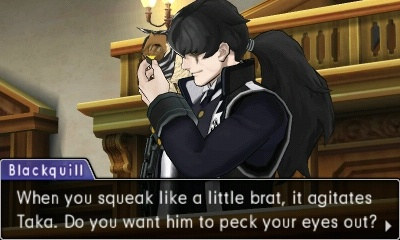


The first installment of the series on the newer console, it unfortunately succumbs to modern gaming diseases. You can only investigate certain places (instead of everything - missing out on optional dialogue), you get told what evidence to present to whom in order to progress (Notes menu), Psyche-Locks are immediately unlockable without penalties (older titles made you find evidence to be able to do that). What about the courtroom battles? Casualized just like the investigations. Too often you're simply told what's the suspicious statement - and even if you incur all five penalties (unlike older titles, 20% is the maximum) - you can simply try again from the same point. As if the series wasn't short on gameplay anyway, they just had to destroy the remnants...Okay, we've got the bad out of the way - let's focus on the good. Soundtrack is good as is expected from the series. A fun mechanic known as the Mood Matrix is introduced - Athena (the newly added defense lawyer) has an ability to sense a witness' emotions, and you have to pick out an emotion which conflicts with their testimony. Nice-looking 3D models of all characters. Three well-developed, well-balanced defense lawyers - Phoenix does not steal the spotlight anymore (like in Apollo Justice). Miles Edgeworth is also back at the end, and Simon Blackquill might be the best character in the whole series. Story is great and keeps you on your toes until the end. All the cases are connected to finally reach an unexpected conclusion, like in Trials and Tribulations. A few fully voiced cutscenes add to the emotional engagement. I'd like to say that what Dual Destinies lacks in gameplay, it gets back with the story - but it would not be entirely true. Though the story is top-tier, the amount of casualization is simply too much, and I cannot give the game a better rating than Somewhat recommended.
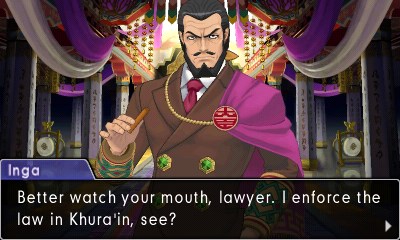

The most recent game in the series unfortunately suffers from the same issues as Dual Destinies (except the fact that you can now "examine" everything). Since nothing has changed in the gameplay, let me talk about the story. Much of the game takes place in another country (Khurain), with different customs. Like the law called the Defense Culpability Act which makes lawyers suffer the same sentence as the accused if they fail to defend them - which is why they all fled the country. The verdicts are made according to Divination Seances, which can peer directly into the deceased's final memories and are considered infallible. Phoenix Wright, of course, isn't phased by all this and wins the first trial in 23 years. The goal of the game is to overturn the unfair legal system in Khurain. Case 1 is pretty boring and drags for way too long, but it is necessary to understand the rest of the game. Second case is cool but unconnected to the main story - though it does shed light on some events from the previous games. Case 3 is awesome with plenty of twists and turns. Case 4 is totally irrelevant to the main story and bravely fights for the title of the worst case in the series. But the last case makes up for it all. It has everything: twists and turns, blackmail, in-fighting between the main characters, tales of families being reunited and broken up again, and finally - a revolution which brings down the Queen herself. Lots of great characters are introduced (like Dhurke and, well...mainly Dhurke), as well as an interesting mechanic of analyzing the victims' last memories. All in all, there is not much to fault in the story itself, but as the issues of Dual Destinies remain, the rating can only be Somewhat recommended.
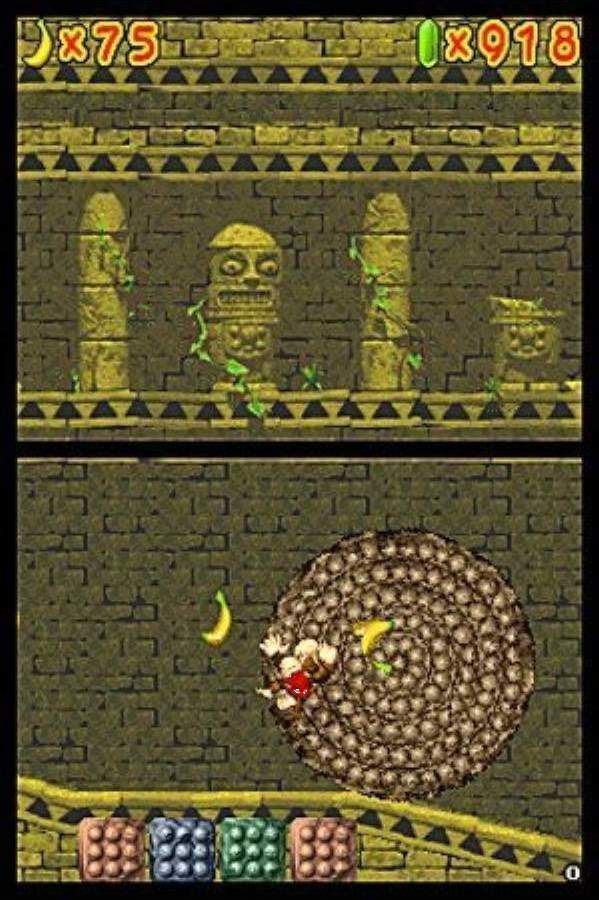
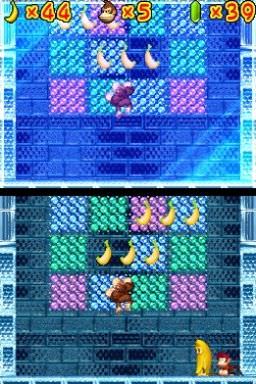
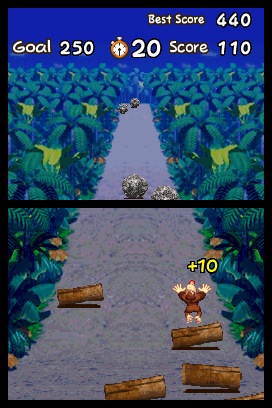
A different spin on the long-standing series of platformers. This time, the focus is mainly on climbing instead of running and jumping on enemies, which opens up venues of gameplay that simply are not available in titles such as Donkey Kong Country (though most of the game is still similar). The always-funny Cranky Kong will guide you through the short tutorial, teaching you the basic controls. He will keep appearing during the levels whenever any new mechanic is presented, showing you how to use it (but you can ignore him if you want to). The pacing of the game is great - you're not required to learn everything at once but are also kept focused by regular introductions of new stuff. Unlike most other platformers - like Mario, where enemies are out there for you to easily stomp on or shoot - in DKJC, you are vulnerable, and the game makes great use of this fact. Attacks are hard to execute (you can only do it straight up from the ground, or while climbing which you need to aim first), and even if you are accurate, you better wish you didn't hit the enemy's stinger or some trap. Though usually the bad guys just follow their set patterns, certain ones like the fish will launch a direct attack if you get close. Often, it's smarter to just avoid the enemies - which reminds us more of the Thief games than the usual platformers. Climbing alone is dangerous in that if you fall (and that's very easy if you are attacking enemies or picking up collectibles) you can either die or just have to climb up again, depending on where you end up.
This brings me to my next important point and a great thing about the game: you can choose your difficulty through gameplay. All the levels have the KONG letters as well as five banana coins stashed around in various (usually hard to reach) places, and depending on your skill you can try to pick them all up at once, skip them or just clear the level a few times to get them all eventually. Some levels make it really tough to pick certain letters, and if you get one but die before leaving its section, you have to pick it up again, wasting lives. And if a section has two hard to get collectibles, it might be wise to only claim one of them unless you like seeing a Game Over screen. Despite the simple controls and basic mechanics, the game manages to create a lot of depth and variety out of them. For example flowers which you have to hold that "shoot" you in a certain direction, as well as ghost enemies you have to stop climbing for to avoid falling (so your usual way of movement is blocked) - both based on the idea of being vulnerable. I'm only 26% through the game but I'm already impressed with how much stuff it has managed to include. It truly defines "doing a lot with little", unlike many other games that throw together a million mechanics which ends up in a mess. Here, everything flows perfectly.
I did not even mention the sound and visual design, which are also top-tier. Nor the various interesting minigames. There are secret stages you can reach if you pick up all the oil barrels in a world, and these are really fucking hard (again, choose your difficulty)! Truly, this game contains no flaws that I can see, and if there are some, they would be nitpicks. A shame it's seemingly never mentioned anywhere, when it should be topping the tier lists. I hope this review will change the situation somewhat. Obviously, the rating is HEAVILY RECOMMENDED!
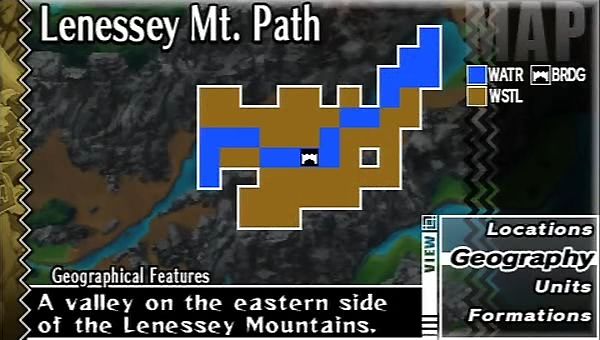
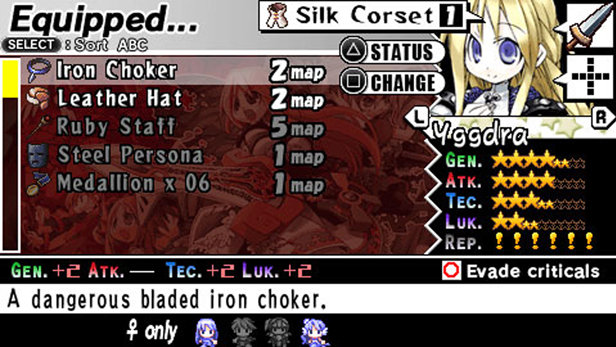
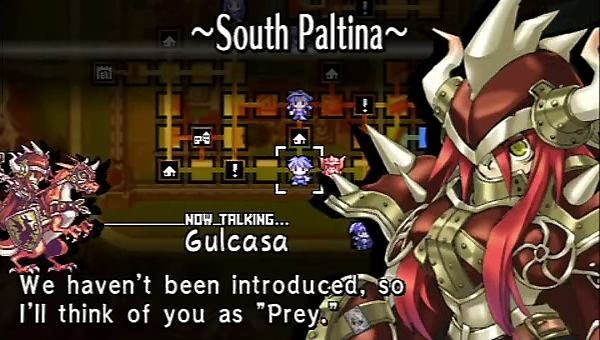
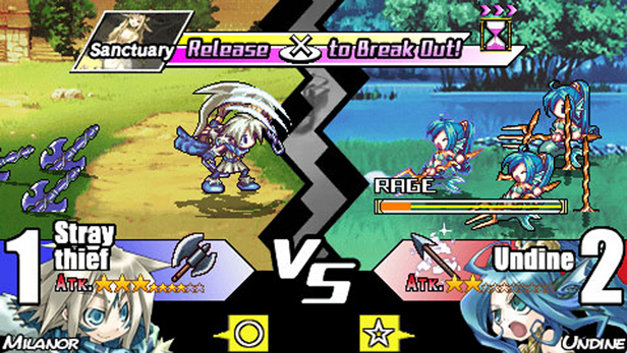
It is rare that I come back to finish a game long after dropping it, but Yggdra Union has captivated me - and remained in my memory - for many reasons. So why did I drop it in the first place, then? Well, the game is very long and there is a lot to focus on in it. Compared to more "accessible" games (such as Cuphead, which I was also playing at the time), it can drain you pretty fast. However, I knew I would eventually come back to it due to its quality and uniqueness. Without further ado:
Let's start with the tutorial. There's no dedicated tutorial mode; any time a new mechanic is introduced, one of your characters explains it to you. Then, you get a few maps to familiarize yourself with it. The unique thing here is that certain mechanics will not actually work (even though there is no in-game reasons they shouldn't - e.g formations or skills) until the developers decide it's time to reveal them - which shows intention to reduce the amount of stuff the player has to take in at once. This is surely much better than burying the player with an avalanche of information would be (the way most games do it), especially with how complicated the game can get. And, Yggdra Union even manages to make the tutorials fun, with some humorous dialogue. Of course, you can skip them if you'd rather deal with things on your own.
The meat of the game - the combat system - is a work of art. You don't actually do much during the actual battle besides watching nice animations and firing off a skill sometimes. All the fighting is really done through preparation - which includes choosing the characters that enter the map, giving them equipment, possibly recovering their morale (hit points), as well as picking a set of cards (I have a soft spot for those, since my favorite NES game included card boss fights) that will be available for usage. After you're done with those steps, you move your characters on the map, pick which enemy (or multiple) to attack, then watch the fight happen.
The reason I call it a work of art is that all the elements fit well together. The vast majority of games give you a bunch of options, then make all of them not fucking matter - but not Yggdra Union. You need to pick the right characters for the map - else you get fucked by the terrain. Then you need to position them right to actually stand on the beneficial spots when attacking. Formations allow you to attack several times in a turn; but the opponent uses those too, and if they have a bigger formation, you will lose units every subsequent battle. This can end up with one of your characters being ganged up on, losing all their morale, and dying. Of course, movement is limited to the amount your card allows, so it is not as easy to create a good formation. The amount of cards you can bring is also limited, and if you waste all their movement, you lose. But you might also want to visit all the towns or other places to get information, items, etc. Which can waste a good card or destroy your formation and make you vulnerable. And the opponent can sometimes attack from different directions, fucking up your formation. Then you have to consider the weapon affinities, items, skills used, etc. All of this can get pretty demanding, and you can't really execute it perfectly. But the game's difficulty forces you to do it well enough - forget about just being able to barge in with your OP characters. With everything you do in this game, there is a tradeoff; which is a great game design approach that's really hard to do correctly - but Yggdra Union has managed it.
There are also many ways to play the game. Again, the amount of cards you can bring to a map is limited, and they get powered up by usage. So, you must choose which cards you want to focus on in a playthrough; trying to power them all up is a sure way to lose. And so, you have to give up some skills in the end, which will make you worse against some opponents that would be weak to those skills. Equipment has two possible uses - recovering your character's morale, or actually equipping the item. This is yet another element that Yggdra Union nails compared to most other games. Equipment has a defined amount of maps it will work on, and after that it breaks and disappears. You have to consider which item is best for a particular map, knowing you can't afford to waste it. If you don't think you're going to ever use an item, you can recover someone's morale with it (and different characters respond differently to various items, according to their likes and dislikes, I guess). If you lose all morale, your character dies, and that can mean a game over screen if one of the conditions was to keep that character alive for that map. Most other games fuck this element up, making equipment indestructible and able to be switched around at will - which means you can abuse an overpowered item forever. I could analyze all the other parts of the battle system too, but I'd need to write a book - and I still have other things I want to talk about with this game.
For example, the characters are fucking awesome. Each one has his own personality, full voice acting, nice sprite work, three different soundtracks (!), lots of dialogue including specific introductions and enemy responses (whereas most games would stick something generic for everyone). The story is cool but can be hard to understand at first, because most of it is revealed later in the game. It's easy to get attached to some of your enemies when you see the determination with which they're trying to kill you; your main enemy even annoyingly avoids death by a hair the first few times you beat him. Later, your characters begin to doubt all the bloodshed they've involved themselves in, which can generate some emotional responses from the player (at one point, you actually fight the soul of a major character you've killed earlier in the game). You can, of course, skip all the story stuff with not much change to the actual gameplay. Optional characters can be recruited if you satisfy some requirements. All of them also have specific strengths and weaknesses - such as terrain, unique skills, or weapons - adding to the replayability (since you can't manage to level them up enough for all of them to be useful). Hidden items exist in various places on the map, adding to the possible playstyles (do I waste my movement trying to find items, or just destroy the enemy ASAP, for the possible Quick Clear bonus?). After you finish the game, you unlock the hard mode that is actually hard (from the short bit I've managed to play). UPDATE: fuck, that was an understatement if I ever saw one. The hard mode totally kicks your ass - no wonder it's hidden at first since I doubt anyone could handle it. But it makes the game even better when you do unlock it. The most important change is that morale is not recovered between levels, making the avoidance of battle losses that much more crucial. The cards that you thought were useless (Refreshment, Sanctuary, damage...) are now essential; you could beat the normal mode with just a few cards - not anymore. Equipment choice becomes much deeper, since the "wasting" of even good items on morale recovery becomes a realistic possibility (a dead warrior with great equipment is still fucking dead!). Yggdra Union is one of the few games that I know of where the unlockable hard mode is actually worth playing.
So does this game have any flaws? I guess the fact that you can't see all the information before entering a map (e.g enemy weapons). Some stuff is also not explained adequately by the tutorials, leaving you to discover it by yourself (e.g about equipping items). But even with the mechanics being revealed at a slow pace, there's still a lot to take in, which can overwhelm many players. AI is shit in many ways, often breaking their formations for no reason and wasting their Rage Bar on skills that can't affect you. The most annoying issue with Yggdra Union, though, are the scripted sequences. I don't mind those in general, except the fact that certain characters are protected during certain situations in the game. This means you can waste your movement and morale trying to kill someone, only to realize at the end that he's unkillable at that moment! And by then, you might have already destroyed your chances of winning that map. All because a dev decided you must absolutely wait to get help from someone, when you could have easily beaten those opponents by yourself at that point. I get that the devs wanted to advance the story, but it could be done more organically. Oh, and the difficulty takes a dive near the end of the game, but I guess this is unavoidable when you're playing well. I really wanted to give this game the best rating, because the flaws are insignificant and the uniqueness and quality of the game are very praiseworthy. Actually, fuck it - what was I thinking? No question about it - this game does deserve a rating of HEAVILY RECOMMENDED!

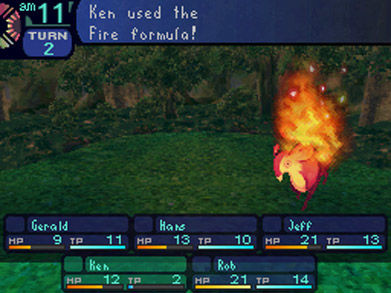
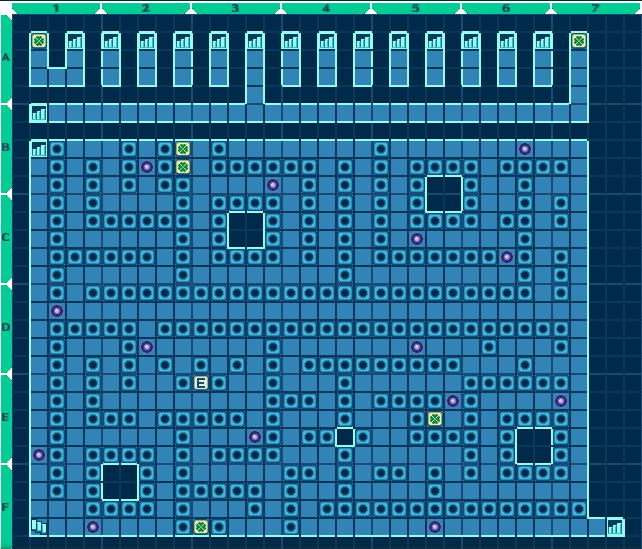
A mysterious labyrinth has been discovered under the town of Etria and suddenly became a tourist attraction. The Chief - then - orders its exploration, bringing popularity and funds to the dying city. You - of course - end up eventually leading the way, getting where no one's been to before and uncovering the labyrinth's darkest secrets. Though the plot isn't the focus at all (you could easily ignore it and barely notice), what is there is well set up and will move you emotionally a few times.
So what does Etrian Odyssey offer over the other games of the genre? First of all, it requires constant focus for many reasons - the chief one being that you have to draw your own map! Yes - finally, the Nintendo DS touch screen has a purpose besides gimmicks or being a shoddy replacement for real controls. If you fail to draw the map properly, you will not know where to go later and can even get yourself killed if you didn't mark some important foes. About FOEs...that is an actual name of a particularly strong enemy class. This is another reason for EO's attention requirement, because you need to carefully watch their movements to be able to avoid them (and you really don't want to fight them early on). Later, you can come back to beat them up for experience points and to possibly claim some great equipment.
The item system of Etrian Odyssey is another very strong point in its favor. Each monster has up to three defined drops upon being defeated, with some of them appearing only if it was killed in a certain way (such as by a fire attack). When you sell enough of them to the shop in Etria, the craftsman can begin forging the items out of the bought materials (most other similar games fuck this up by making it useless to kill mobs except to gain a paltry amount of experience; their drops are only a nuisance). This gives huge incentive to explore the lower parts of the labyrinths as soon as possible in order to meet new monsters and take their drops. This - of course - brings a certain amount of danger, since the new monsters will be likely stronger or attack in unexpected ways (risk versus reward - a principle of good game design). The variety of those is massive and each fight brings with it a different challenge. Whereas you can power through most RPGs, forget about that in Etrian Odyssey . You will meet monsters resistant or even immune to your attacks or ones that will turn your huge attack stat against you with confusion. You will be put to sleep, poisoned, blinded, have your stats reduced, magic nullified, skills disabled and will even witness monsters working together to beat you down. Etrian Odyssey can be very unforgiving if certain preparations are not taken, which is where we come to the best feature of this game...
...Which is, of course, the setting up of your party. You've got 7 classes available at the beginning with two more added later game. As you can only take five members with you, which ones to give up is an important decision. Do you want reliable healing, stat boosting, magic to beat down physically defensive enemies, skill disablers to have it easier against bosses or handy overworld skills (allowing you to pick items up from the ground or avoid enemies, for example)? It's all up to you. There are many viable combinations of classes and their skills and way more non-viable ones. The game, fortunately, tells you the skill trees right from the beginning so you can plan everything in advance. But, you will likely have to modify your strategies while encountering new stuff in the game. If you do screw this part up, you will find this game a bitch to clear.
I'm not going to cover those in depth, but this game also includes standard RPG features like quests, various events scattered around the labyrinth (with positive or negative effects, or even both at once), treasures and lots of well-written dialogue. All of this is supported by great visuals and soundtrack. Battle themes are intense and the overworld themes change from comfortable to eerie over the course of the game - just as more of the dark story gets revealed. This game does have significant flaws though - some of the later dungeons are grindy, luck-based, require way too much attention and just annoying in general (all the damn traps, one wrong step and you have to do it all over again). The game also doesn't tell you enough about how skills work so it is really easy to invest in something that disappoints later and ruins your strats. Most egregious, though, is the fact that you absolutely need certain skills maxed out to deal with the endgame bosses and there is no way at all to expect that beforehand. I still wanted to slap a HEAVILY RECOMMENDED rating onto this one just because of all the things it does great (while everyone else flops), but since the later installments of the series do fix the issues I've stated (among other improvements), the final mark is a strong Recommended.
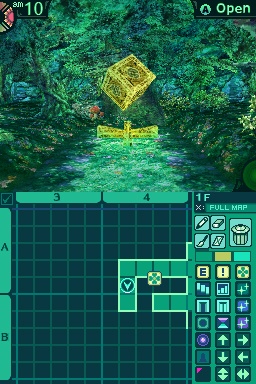
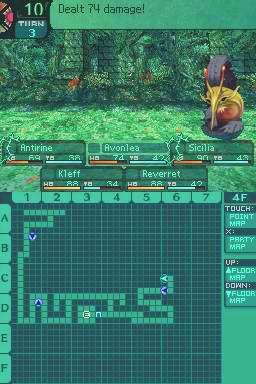
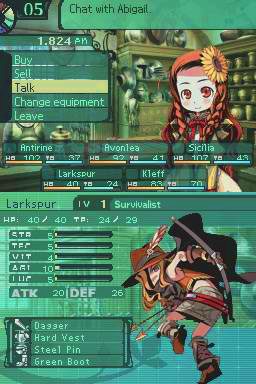
Sequel to the above, with a totally new labyrinth (including a really fun ice sliding puzzle) and story. Includes many very welcome quality of life changes such as more map icons, being able to touch the top-left corner of the map screen to center on your current square, a better font, and most importantly - the Suspend Save, which allows you to save your game anywhere when your battery is going out. What about actual gameplay related changes?
Two new classes have been added - the War Magus and the Gunner. Now - while the War Magus is pretty underwhelming (the War skills in particular absolutely suck, while the Magus skills just mean healing) - they truly went all out for the Gunner. Though he's frail, he can sit in the back row to do massive damage. He has all the toys including binds for all bodyparts, multihit shots, all elemental shots, and even a fucking party-wide status healing shot (outclassing the Medic at medicine, can you believe it?). He can also stop FOE movement on the field with his Haltshot (though it does not work on many FOEs - a mistake IMO).
Old classes have been rebalanced, which in many cases just mean weakened - such as the Survivalist, who now lacks many of his useful skills like Trickery which used to increase evasion party-wide. At least the Ronin is available right from the start, and he does perform pretty well. Later, you also get the chance to unlock the Beast class, which is focused on protecting the others and has its own specific equipment. However, it is apparently bugged in that it uses the targeted character's defense (instead of its own) for calculating damage.
Other changes in the game include certain weapons having elemental enchantments. This adds depth to the choice of equipment - you might want to scout the weaknesses of the monsters in the dungeon you're going to explore, and pick the weapon accordingly. Sometimes, that might be the weaker one with the appropriate element. There is an increased focus on avoiding FOEs instead of fighting them. You get skills like the aforementioned Haltshot and Racket to control them. What this also means, though, is that there is no experience to be gained for fighting them, which is an absolutely terrible decision. It's also pretty easy to get ambushed by them (even invisible ones are included - get the Esc Up skill ASAP to prevent frustration! Though, if you're facing the wall, you still can't flee - ugh) At least they still provide materials for new equipment...
Not much more to say about this game. Keeps the good (while improving some - labyrinth design is much better, for one) and - unfortunately - most of the bad. Consider this an Etrian Odyssey 1.5, and you will enjoy it just like the first one. Recommended.
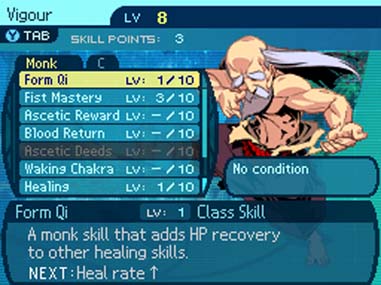
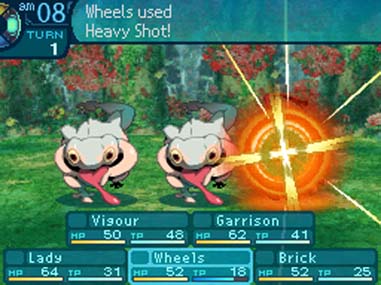
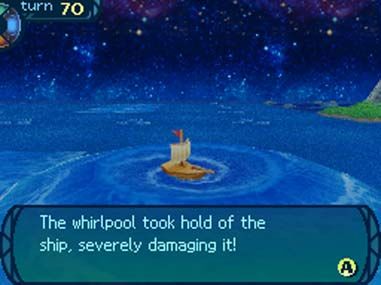
If you're expecting yet another "expansion pack" tier sequel like Heroes of Lagaard, you will be very disappointed in this game. Because it took what was a rough, unpolished rock (EOI and EOII) and made it into a beautiful diamond. It is the Hitman 2: Silent Assassin compared to Codename 47. Or the Pokemon G/S/C compared to R/B/Y. So, what's so great about it? In terms of convenience features, not much is new except an autopilot feature (allows to automatically move according to a certain path, like a macro in text editors, I guess), the game being faster and the clinic now residing in the Inn. So let's move on to the meat of it:
The most important things in any dungeon crawler - the class and skill systems - got totally revamped. All old classes have been dumped and replaced by nine (+2 unlockables) way cooler and more balanced ones. Each class has a unique and powerful class skill which gives all of them a personality. You can't put points into stats like Vitality anymore which leaves more of them to focus on the fun stuff - skills. Whereas EOI and II have mostly focused on boring skills such as multihit or elements (which EOIII has too, of course), here we have summoning beasts, cloning yourself, recovering HP / TP from your allies' deaths or even killing them yourself to raise attack. We also finally get an exploration focused class, with skills such as harvesting (no more wasting points on Take, Chop or Mine for classes which would rather fuck shit up), camping, avoiding encounters, nullifying traps or teleporting to town. But since we only have five slots in combat, wouldn't the overworld-focused Farmer bring us down? Well, yes and no. Though he does have a few moderately-useful combat skills, the real feature that allows him to perform even there is...
...Subclassing! Yes, that's the thing where (from the third stratum on) a character can have two classes at once. This creates tremendous depth and allows even the weak Farmer to gain access to buffs, debuffs and weapon masteries; or a knight to become a fucking mage (this isn't a good combination, by the way). Some cool things you can do with this are subclassing the slow and often targeted Gladiator as Hoplite, gaining the Parry and Magic Parry skills to draw and nullify the opponent's damage completely. Or the frail Buccaneer can raise his evasion as the Ninja, and also perhaps clone himself and get an additional chance at a head bind if he's running Rapier. There are, though, way more chances to fuck it up than do it well, and the game is absolutely unforgiving in this regard. The first time I encountered subclassing I went Prince -> Shogun, which was a total failure since both of those classes require a lot of skill points to be viable. The bloodthirsty Shogun likes attacking every turn (some of his skills even benefit from being frail - which is incompatible with Prince's high Vitality), while the Prince prides himself on being the ultimate buffer. They're totally incompatible classes and there's lots of such combinations. Fortunately, you can reassign the subclass at the cost of five levels.
Another major added feature is forging equipment. Any weapon which has enchantment slots can fill them with properties such as elemental damage, infliction of binds or status, raising stats, filling the Limit gauge, increasing critical hit rate, and others. To be able to do that, you need to find a hammer related to the desired enchantment. You find those on the map or earn for completing missions. Of course, this costs money and materials - and the stronger the weapon, the more it takes to forge it. You can also buy pre-forged weapons - but you cannot remove their enchantments. This feature makes for way more variety for building parties. For example, if your party has Ice and Volt damage, but no fire - you can fill that up with a fire-enchanted gun. Or, if you lack a Wildling with Venomfly, you can inflict poison with a specially crafted bow. A weapon can also have multiple enchantments! A Volt-type gun which can bind the opponent's legs and also blind him? Sign me up! Often, the best weapons are those with the strongest enchantments, instead of highest base power.
As if that wasn't enough, Etrian Odyssey III: The Drowned City includes a game within a game called Sea Exploration. Briefly - you equip a ship, bring some food, and have a certain amount of steps to reach places before being forced to return to the port. The eventual goal is to restore the glory of Armoroad by finding routes to various other ports. In your way stand currents, whirlpools, reefs, swamp, pirates, and your own puzzle solving skills. At first, you are able to sail only for 6 squares, but, by finding an island with Sheep Cheese, you can bump that up to 8. This allows you to reach yet other places. This goes on and on until 28 at the end of the game. Each piece of equipment costs money which you can regain by fishing - or lose by failing to fish enough, being trapped into a whirlpool, attacked by a pirate or a giant fish. This can become a money source or a money sink depending on how it goes. There is another dimension to this game called Sea Quests. After restoring the road to some place, you can fight the monsters in it alongside NPCs. This brings experience and unique enchanted items. The most impressive thing about Sea Exploration is that it's totally not required to complete the game!
Lots of combat system improvements including Limits - special attacks you can cast whenever your Limit gauge gets filled. These include elemental damaging moves, buffs or even a move which prevents you from being killed once per fight (leaving you with one HP point instead). Of course, to use a Limit, all the assigned participants must be alive. Etrian Odyssey I and II had something similar, but way worse since the gauge took a year to be filled and there wasn't any variety in Limit choice. Monsters now also form true combos, such as the Ant Queen throwing her ant summons at you for massive damage (and killing the ants).
Story wise, we have three endings depending on your choices throughout the game. The two of them are split by choosing one or the other faction to side with mid-game; the third one has other special requirements you aren't likely to get without looking them up. You can't unlock two of the unlockable classes in one playthrough since they depend on the chosen faction (you earn their class) - but fortunately, there's a New Game+ which allows you to easily see the missed content. Replayability is high - lots of fun or stupid party combos you might be eager to try - and again, much of the enjoyment of this game comes from having a strong party since the game is so demanding.
This game is so great I could spend a year praising it, but this is the Short video game reviews after all (fuck it, I must have filled the Limit gauge several times over here). So does Etrian Odyssey III have any flaws? Not that I can see, except nitpicks. The Monster Codex could be improved with information about where a certain monster is found (or information about its weaknesses / gold drops if discovered by the player). Same with the Item Codex - which monster does this item belong to? (or where do I harvest it, etc). The difficulty might be slightly too high - though it does depend heavily on the quality of your party. Do it properly (easier said than done) and the game will feel just right. You'll need a way to deal - as well as take - enough physical and elemental damage; have buffs, debuffs and healing; deal with status and TP shortages, choose good subclasses and to cobble all that up in a way that meshes well together - good luck! Some bosses and FOEs (by the way, these are back to giving experience again - fixing a major EOII flaw) also have gimmicks which require specific strategies. This is clearly a game for an enthusiast, not a weekend vidya warrior. But for the intended audience, the rating simply must be HEAVILY RECOMMENDED!
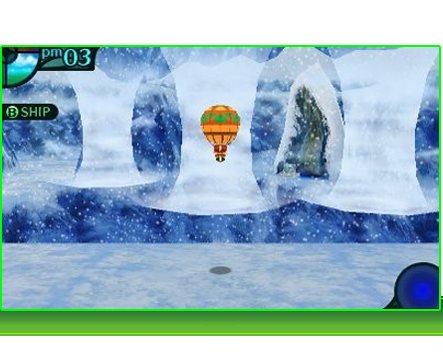
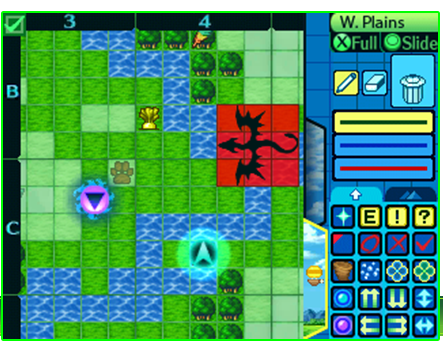
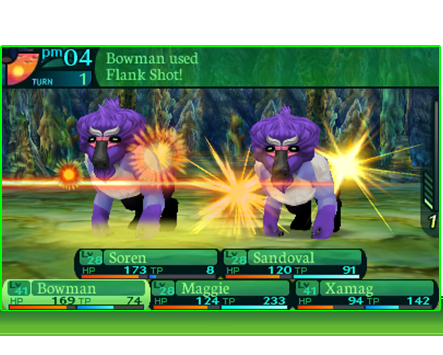
On my first playthrough of this game, I dismissed it due to the gimped skill and class systems. At the beginning you only have 7 classes available compared to EOIII's 10. More importantly, the amount of possible builds is much lesser (e.g the Nightseeker has pretty much two, and the back row one isn't very good). Skills are also arbitrarily locked behind levels instead of just the points you put into them, further limiting your choices (or at least pushing them forward in time). Turns out my knee-jerk reaction was unjustified, though. With the game not throwing so many skills at you at once, you can more easily focus on the kind of build you want. And there's still lots of team-building depth due to party combinations and later - subclassing. Some combos I particularly like include giving the Swords Dance (Dancer subclass) skill to any character abusing regular attacks - like a crit-spamming Sniper - allowing you to attack up to 4 times a turn for huge damage and enchant procs. Or for a party combo - Dancer's Quick Step + Arcanist's maxed Sleep Circle, with luck-enhancing equipment to put mobs to sleep at the beginning of the turn. It's still easy to fuck up with a bad subclass (I'm an expert on that, haha).
In previous installments, you were pretty much expected to play the whole game with the party of five you've picked at the beginning. EOIV reverses that though you can still do it if you want to. Not only do a few high-level NPCs join you over the course of the game - but you can immediately train a certain amount of recruits to a level more in line with what your party already has (at the point you get the option). This gives you a way to play around with all the possible classes without grinding or replaying the game. Resting also costs only two levels, making subclassing screwups not so costly. Don't get me wrong - the game is still very difficult and expects you to arrange your party wisely - maybe even more so then EOIII. Better get your binds, status, debuffs, status protection (don't leave Tharsis without this unless you like the game over screen), enough damage and healing ready plus at least some reliable party combo. If you don't, it's not only the bosses but also certain mobs (enemy variety is huge in this game) that will expose you mercilessly - especially the later game ones.
Enough about the combat and skill systems - let's move on to some substantial upgrades that Legends of the Titan brought in. First of all, all the labyrinths are now positioned in an actual world that you navigate with your skyship - instead of being randomly put under each other; this makes the world seem more "real" and is good for immersion. Skyship traveling could be compared to the ship minigame from EOIII - except this time it's an integral part of the game instead of a huge sidequest. You can find food that will boost your stats, treasure hunt, rescue other skyships for rewards, fight (or distract) overworld FOEs (which will defend the food that you intend to take), discover hidden dungeons (yes, most are in fact optional), or even get smacked by a fucking dragon (or blown away by a tornado) and be forced to return to town, losing food and having to rest at the Inn. My only problem is that when that happens, you don't have to pay for the skyship that was destroyed (as was the case with EOIII ships) so there's not that much penalty for screwing up. Overall, I give the game a huge + for connecting the labyrinths to an actual world.
The game has well animated models for all the enemies. Finally, FOEs are actual monsters running around instead of red or black blobs. This is also the basis for certain puzzles that require you to manipulate FOEs to open up paths. The soundtrack is often considered the best in the series - I especially love the one from the last stratum. Many more map icons - EOIII hugely suffered from a low amount. Here, instead of just marking an "event", you can use question marks for informational events, exclamation marks to signify danger, X's to remember unresolved ones, etc. Of course it's up to you where to put what - and the last stratum (IMO, best in the series) will put your mapmaking prowess heavily to test. The Monstrous and Item Codexes are heavily improved - you can see where a certain item is found as well as the weaknesses and resistances of a monster during battle if you've beaten them before (otherwise, use the Analyze burst skill).
Story is pretty much the same as usual, but it's revealed in a much more interesting way thanks to the books in the last stratum. Overall, Legends of the Titan improves a lot over its predecessor with the only flaws being the gimped skill / class system (which pretty much resolves itself later) and the low penalty for a skyship screwup. If I was supposed to rate this game during my first playthrough, I'd give it a Recommended. But don't make the same mistake I did - at least keep going until subclassing. The game is amazing (also very worth replaying despite low character variety at the beginning) and fully deserves the rating of HEAVILY RECOMMENDED!

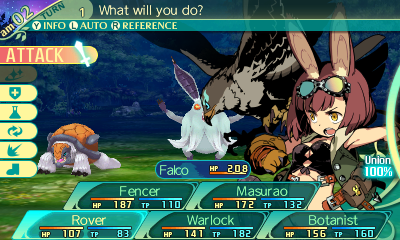
If you've played the previous entries in the series, you know the drill already. So let me just mention the changes this game has over the others:
The class and skill system is better than ever. 10 extremely well balanced new classes, and instead of subclassing, a more logical system of Masteries that allows you to choose one of two paths for your character after beating the second boss.
The game is much more focused on FOE avoidance. This is not only because they're harder to fight (don't even bother touching them the first time you meet them), but that they can do more, and there are more of them. For example, in the second stratum, you have FOEs that will push overworld boulders onto you (if you let them). In the third, some FOEs are burned by specific tiles (the ones that the sun shines on - so it only works during the day) - and yet others can go through walls. Sometimes these come together, which makes navigating the labirynth quite the puzzle. In stratum 4, you can control FOEs by hitting crystals - this means you can even lock yourself into a dead end where the FOE is sure to devour you. The funniest thing ever is possible in the fifth stratum - namely that you can get a certain FOE to punch the others; this can be used tactically.
Mapmaking is more involved, you will often have to mark FOE paths to be able to move through an area more easily. There are more additional terrains (like, again, the sunburning tiles) which can be marked by specific floor colors. Some FOEs move through water, which - again - necessitates marking it without walking on the tiles themselves (your characters can't swim, apparently). The devs did the worst thing ever, though, by removing the X and V icons from EOIV. These were very useful to mark events as solved or unsolved; fortunately, this can be sort of mitigated by the specific floor colors.
To combat the increased difficulty of EO5, you get a slew of Union skills to abuse (these replace the Limits from EO3). Some of these are extremely broken, like Hygeia's Bowl - which allows full team heal + resurrection of one ally - and will often save your ass in tough battles. Even the basic Double Attack kicks ass and can be used a few times before you lose your Union gauges. The most important one, though, is the Full Retreat skill, which allows you to flee from FOEs 100% of the time - but requires at least three members of your party alive, including one with a filled Union gauge. Remember, though, that most of these skills are race-specific, which means only certain characters of yours will be able to learn them. Forget about spamming Hygeia's Bowl when only a single party member has it.
There is a new feature of cooking food, which makes outdoor healing possible without wasting Medicas. Recipes allow you to also recover TP later in the game, but require you to have all the ingredients, which are rare or hard to find. Most of them have to be picked up in special spots, given to you by the innkeeper or found by a character with a specific race skill, such as Hunting. By the way, I really recommend picking up all the outdoor race skills as early as possible - this allows you to activate many events (which EO5 is full of) that rely on them, such as looking into holes with your Night Vision skill, or moving boulders with your Brute Strength; it also gives experience.
The money system in this game is extremely well balanced (as always). Want to have your Masurao swing four katanas? Prepare to go bankrupt, then, and have your other characters walk around naked. In addition to money, another seriously limited resource are the materials - whether monster drops or pickups. Even if you can afford both the armor and weapon that depend on a FOE drop, you still have to choose what to focus on, and can't have everything. Somehow, a lot of RPGs (some reviewed here) screw this up.
Etrian Odyssey V finally adds proper character customization, including the ability to modify hair, eye and skin colors - as well as 40 voices to choose from. You will hear these voices all the time during battles, but the vast majority of overworld dialogue is unvoiced - whether by NPCs or your characters. Still, this is a welcome addition.
I have only a few small problems with this game. While the random encounters and FOEs are extremely challenging, the bosses are all underwhelming. Maybe I'm just better at the game than I was while playing the previous installments, but the most tries a boss took me was two - not even the final boss escaped this rule. The fights are not cakewalks, and they're still fun to play - but I expected somewhat more. The story is a lot worse than the one from III or IV; you could say it pretty much doesn't exist. Though this hasn't ever been a core point of the series, it is still sad how the developers have almost completely glossed it over this time. Etrian Odyssey V also contains no world map unlike IV, but I can't honestly consider it a serious flaw since it's just coming back to how EOIII already was - and I didn't hold it back against that game. There are no Sea Quests or anything like that, either; the developers seemingly focused on the essentials - and they did a great job. HEAVILY RECOMMENDED!

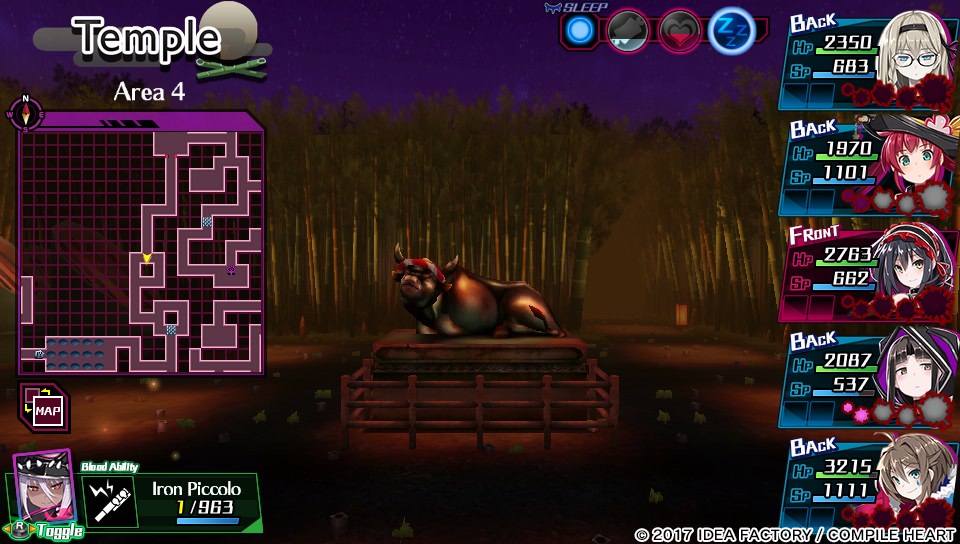
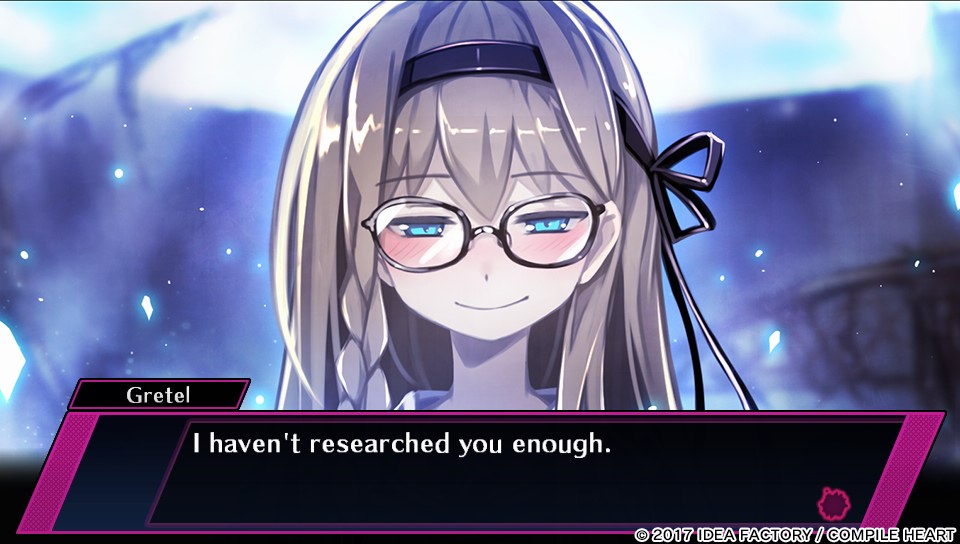
Let's get the good things out of the way first - since I will whip out the heavy Criticism Hammer later. The setting is amazing - the whole concept is the Jail (where the game happens) mimicking locations from the human world - but not necessarily in ways you'd expect. So, you will see lanterns submerged underwater, random traffic lights, frogs locked behind bars, vines coming out of walls and even doors made out of cakes. The monsters are also made out of human objects (or living creatures) randomly put together. So, you'll be fighting chess pieces, chairs with sharp teeth, keychains, women's shoes with teeth inside them and a tongue sticking out, green peas with eyes instead of the edible stuff, and even spiders with freaking sombreros on their heads. Every monster has a few variations and although most are just simple recolors, some have had quite a bit of detail added such as a different facial expression.
The story alone is a reason to check out Mary Skelter - I won't spoil it here so play the game if you want to see it, or look it up (but it's not the same). There are 10 girls to "befriend" and fight alongside. The lewd content is off the charts; but the actual characters are also pretty well developed (they are actually based on stories from the human world, fitting the setting). Depending on which girl "likes" you the most, you can get a different ending. Unfortunately, it is a formality to get all of them to "like" you - you just have to give them the right gift items; they are cheap and money is plentiful. Every character has a different costume for each of the five jobs they can undertake and also two other ones for the battle states (including an almost-naked one which just happens to be the strongest...). Since I've mentioned battles, let us move on to that section already, since they are the bread and butter of dungeon crawlers anyway (alongside the actual exploration).
And the battles, my friends, are where this game takes a huge dive in quality. At least, this happens when you realize multi-target moves break the game right open and take its guts out. Nothing remains after this - all random encounters are reduced to "click the respective full-party attack". Almost always, they are over in one turn and when you get Mortal Force (available pretty early game) - in one attack. That also ruins the exploration part of Mary Skelter since the items you pick up end up just taking space. Healing, damage, revival, even mana recovery items end up useless since the girls can regain their own mana in Massacre Mode that they access if they deal enough damage. The other battle state, Blood Skelter, could serve as a counter to that (since you lose control of the characters then and can even full party wipe yourself) - unfortunately, it can be reached only by taking damage, so it's not too dangerous.
Luckily, at least a part of the game is available where the above doesn't apply. It takes a while before you get a full party and even longer to get the necessarily skill points to max out the multi-target skills. However, when you do so, the game becomes a piece of cake - so enjoy it while it lasts. Before that moment, losing is a pretty real possibility and healing items are in high demand (though damaging ones still suck). You might have to think then whether you want to explore further in the dungeon or not, especially since Nightmare chasing is a thing. Let me talk about that a bit - every dungeon has a Nightmare guarding it, and after a certain amount of time, it will start running after you. You cannot leave the dungeon or even see the minimap until you get far enough away from it. The Nightmare can even block your way and you have to fight it then - they are unkillable until the Core of the dungeon is destroyed, so you have to knock them out and run away again until you are able to leave its "zone".
And that is the other point where multi-target moves stop being broken. Every dungeon has a Nightmare as its boss, and obviously, it's a single enemy so full-party attacks are pointless. However, these fights can be trivialized by attack debuffs - if you lower the Nightmare's offense twice, it might as well become an ant for all the damage it will be doing. At least some of the boss fights are legitimately tough - like the first two, where you might not have the proper skills or items yet. Or the one in the Temple, which has overworld aspects to it. The last one also presents some challenge, so it's not all bad in terms of difficulty in this game - at least, you're not really having your hand held and have to figure out the proper strats on your own. The Nightmare chasing concept is amazing, actually - it's too bad it's relevant only for a short while. On the other hand, if you're not being chased, you can leave the dungeon anytime either by item or one of the girls' abilities (which you have right from the beginning). At least, the developers could have made that tougher so you couldn't travel through the dungeon fearlessly forever.
Now let's come back to the positives again, because this game does have a lot of them. Soundtrack is decently high quality. Voice acting is good, but limited in the English version. Menuing is great (this is where a lot of dungeon crawlers struggle) - you can even skip dialogue and battle animations if you so desire. Traps are more interesting than the usual spikes or lava, but don't do an amount of damage that matters beyond early game. There's a significant amount of weapons, skills, jobs, and other fun battle gimmicks such as various statuses or licking blood for boosts. It's unfortunate that all those become mostly useless because of that one glaring flaw. You can even learn the skills of the monsters you fight if your girl takes the Mimic job - but again, it's only relevant for a short while. Every Blood Maiden (what the girls actually are) has a certain ability that can be used in the overworld, which adds certain depth to the exploration and brings with it some puzzles to solve. You can satisfy the Jail's three desires to gain some bonuses, which is a great concept and fits with the story but again, the boosts are mostly useless (aside from +gold and new area unlock). Wandering Merchants are a great idea which allows you to get some rare items if you find one and he happens to have those items at hand. Upgrading weapons is a possibility, and is one area of the game that is actually done properly - Blood Crystals are limited so you have to think hard about what you want to upgrade. The crystals can also be spent on Blood Devolution (which allows re-assigning skill points) and changing jobs, so there's no issue here. Too bad the developers did not take that approach elsewhere. Because - if they just nerfed the multi-target moves a little - we could have had a great game on our hands. But as it is, the most fitting rating is Somewhat recommended.

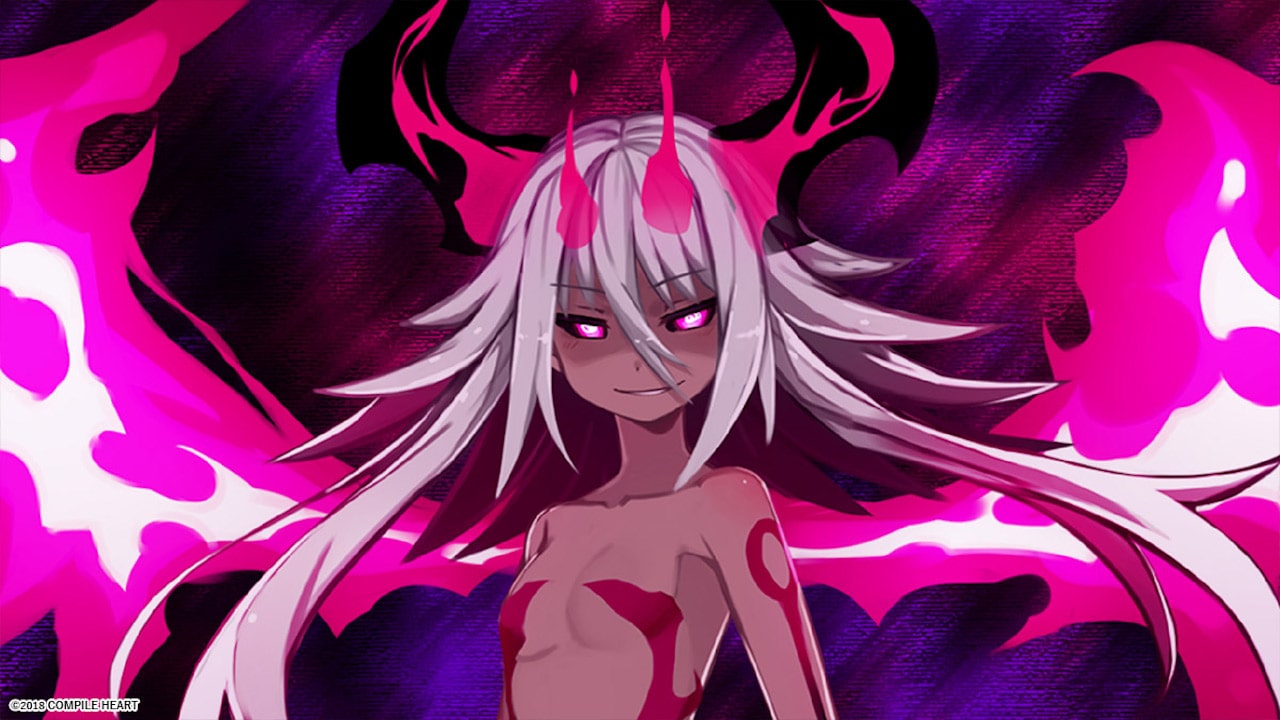
Hey, it's Mary Skelter, except heavily improved. Aside from a completely new world, story, characters (with some old ones still included), enemies, weapons and mechanics, the sequel fixes the biggest issue of the original game - the overpowered multi-target moves. Now they've become chants, which means they're not immediately executed, and can be broken by enemy hits. No more cleaning up the game with a first-turn Mortal Force! Since nothing has gotten worse compared to the first title in the series, this alone is enough to bump up the rating.
EDIT: okay, now that I've beaten the game, I can review it in more depth. Unlike what I said before, the depth of Mary Skelter 2 is still pretty barren - certainly not even close to Etrian Odyssey. Early on, damaging items are really useful, same with healing items - but later, they become useless and so you end up with a lot of trash in your backpack and exploration made pointless. Traps also do an actually relevant amount of damage (compared to the original), increasing the need for caution - but again, you end up with so much healing items you can just ignore them and recover later. This is why the best part of the game is probably the Aquarium Ruins - you have little stuff, little money (and most items are unavailable at the shop at that point, anyway), little skills, strong opposition and have to watch every step (to avoid traps) and think about your every move against enemies.
Let's talk about the combat in more depth. Since you now can't breeze through fights with a few multi-target hits, teambuilding and strategic move choice become much more important. With a well-built team, you can pretty much handle everything easily. I like Paladin with Intimidate up front and a bunch of damage dealers in the back row. The only way to really fuck this setup up is for the enemies to start spamming multi-target attacks. You can't predict when they're going to happen and there is no way to do mass defense boosts (aside from Jail Bonuses) or mitigate the damage in any other way except by wearing high defense equipment. Jail Bonuses have been way improved (unlike the mostly useless ones in the original), and hitting the one you need will often make or break your battle. Picking the Jail Bonus skills early on is a smart thing to do, allowing you to poison multiple enemies, fully recover multiple allies, or get multiple stat boosts. Though there is a lot of enemy variety, their specification rarely matters during battles except if they are capable of using multi-target moves (those should be prioritized for killing). A lot of skills, like status recovery, end up being useless because status is so rarely used and there are items to cure it found all over the place, anyway. There is no way to prevent mass stat lowering by enemies, and no way to recover except again, by lucky Jail Bonuses. But this really only becomes relevant in the last dungeon.
Some important new features include Blood Farming, which allows you to plant Blood Crystals at certain places on the map, that will turn into equipment after a few fights. A piece of equipment picked up this way will not only have increased stats, but often have skills attached to it that make it much more useful than those bought in the store (and with this, money becomes irrelevant, as in most RPGs). In itself, this is a great idea, but it has not been balanced properly in this game. Skills like Fire Rig or Wind Rig allow you to do more damage to enemies that are weak to those than even "high damage" job-specific skills like Overlimit or Gigantast - for no mana cost, as well. This makes picking any skill that doesn't hit a weakness pretty much pointless. You can infuse Blood Packs into the Blood Maidens which will give them additional skills (that don't take away mana unlike regular ones) - though they mostly suck. Jail Trials are simply an in-built challenge mode, which applies various handicaps (e.g no saving, no minimap, increased damage, decreased stats) but gives you rewards if you manage to survive under those conditions. It's great, because you can now choose the kind of difficulty you want - and you can easily make it nightmarish.
One thing I really like about Mary Skelter 2 is its pacing. All the mechanics are revealed slowly - this is great for such a complicated game, and many RPGs do it wrong. Imagine if right away you were required to do Blood Farming, flee from Nightmares, avoid well-placed traps, painstakingly choose your equipment and watch heplessly as Ripper Jack rips and tears through your team. But every time something new is introduced, you have an opportunity to learn it - and the two first dungeons are pretty much tutorials. Though, what I ended up disliking in the end is that the Nightmares appear way too rarely, and even when they do, they're not very dangerous (aside from the one in the last dungeon).
So, this game heavily improves over its predecessor. Eveything that was great about Mary Skelter remains (as well as adding some welcome new stuff), and the fundamentals (combat, exploration and teambuilding) are at least solid. Game is also extremely long - takes about 100 hours for a regular playthrough (not bothering to 100% with the many boring missions to clear) and regardless of its flaws it managed to stay fun for all this time. It's just, when you have played the Etrian Odyssey series, you kind of tend to compare other similar games to it - and they can't measure up. But Mary Skelter 2 is still good in itself, therefore it's Recommended.
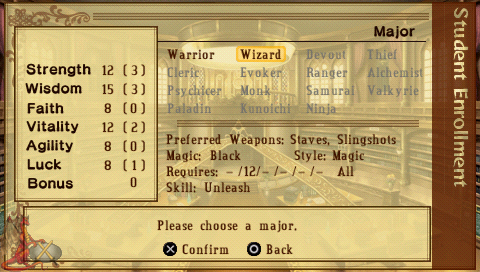
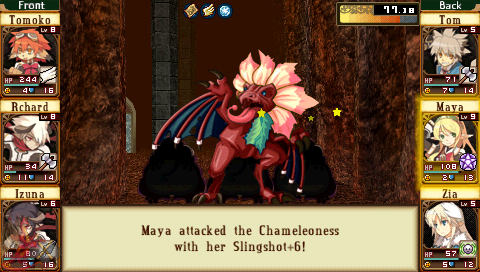
Turn-based dungeon crawler about school students going on an adventure to explore some labyrinths. This game has heavily impressed me at first, and if I wrote this review earlier, it would very likely get the highest rating. But the longer I played it, the more my fascination with it dropped. The first things you see are the character and party creation, and - since they are deeper than the Pacific Ocean - you will be pulled in and put up with the game's numerous flaws. Dungeons are long and repetitive, and for some of them you need to find the one specific square to step on out of the whole width of the map. If you guess wrong, you might even get sent to the beginning of the dungeon, and have to go back to seek that square again. Other times, you might be walking through "dark space" that you can't light up and have to find your way blindly. Though most of these are pretty short and easy, there are ones that will make you pull your hair out. While traveling, you get to listen to the same background music all the time...except when you get attacked by random encounters (which you can't avoid - only run away from), where it is replaced by a single battle music. The fights themselves are not very deep - though there is a variety of enemies, spells, weapons, etc...once you get your party set up well, most of it doesn't matter - you just click Attack. Unless you meet a boss, which can make all your preparations irrelevant while it one-shots your party.
With games like this, there is always great potential to make good puzzles, but Class of Heroes is lacking those. I found a good one based on a clock in one of the late dungeons, and that's pretty much it; but I didn't finish the game, since it bored me. Maps are pretty much required to traverse the dungeons, and if you want to keep them with you at all times, much of your bag space will be taken up - and with all the loot to pick up, that's a problem. Many missions are heavily luck based, requiring you to find three different types of wine that never fucking drop, for example (for those missions, it is often easier to find the required items in stores). Arranging the loot after going back from a dungeon takes fucking ages. You could say "just get good", but there's the good kind of difficulty and the annoying one, and Class of Heroes is heavy on the latter. There is little story, bland environments, annoying sound effects (the levitation sound, ugh)...Since I've shat on this game until now, let me mention some of the good things. As said before, character and party creation. Class, skill, item, spell, enemy variety (though much of it is wasted - either it's useless or absolutely required). Alchemy system allows you to create weapons from the resources you pick up (and you will need it since the buyable stuff mostly sucks). And, unfortunately, I can't say much more good about this game. I've shat on titles like Hitman GO or Plants vs Zombies, but the gameplay of those is much more engaging. The meat of Class of Heroes - dungeon crawling and battling - leaves a lot to be desired. Though I do recommend at least checking out this game for a while - even if only to see the character creation system - I can't give it a better rating than Not recommended.
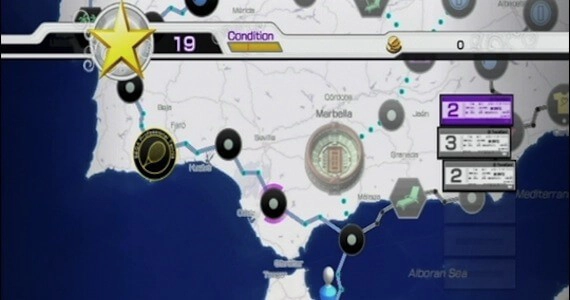

Game, Set, Match, Player One! The only tennis game available on the Vita - and it does a great job of representing its genre. Nice practice mode will teach you the basics, there are also Arcade and Exhibition (custom) modes - but the real meat of the game is the World Tour. There, you get to create your own tennis player (and the customizability is massive: from height, muscularity and facial features to the way your player will hit his groundstrokes), whom will then fulfill his dream of becoming - hopefully - the world's best tennis player! The overworld takes the form of a board game on which you move using "tickets" that allow you to move a certain number of steps. The goal of the game is to earn as many stars as you can, climbing up the rankings to eventually challenge The King of tennis itself. The board game part is pretty deep in itself - after every movement you get a random ticket; the most common are the ones allowing you to move 2 or 3 spots. You have to decide on which spots to step on - do you want to do a media interview (adding stars but decreasing money), meet the fans (again adding stars but decreasing condition), restore condition (needed to play tennis at full capacity), buy additional tickets, do one of the many training minigames available (which will increase the skills of your player, unlocking one of the many playstyles), or play the actual tennis matches? You might also be put into a sticky situation where you can step only on accidents, if you have all tickets of the same number, for example - forcing you to plan ahead.
The season is split into five parts, each with a major tournament and some lesser ones. The amount of stars you have determines which ones you can join; getting further in them gives you more stars. You get to face actual tennis players such as Rafael Nadal, Andy Murray or Maria Sharapova - and even recruit them as doubles partners. The attention to detail in this game is insane - not only do these players play eerily similar to their real-life counterparts, but even lesser players each have unique animations made for them. Okay, let's talk about the other part of the game - the actual tennis. The developers did a great job of simulating the real tennis season - you get to play on all the surfaces which have different physics. Each opponent also has his own playstyle and will require a different strategy. All the usual shots are included in the game - slice and spin serves, backhands and forehands, volleys, drop volleys, diving volleys...dropshots, lobs, smashes. slices, and even game-winning power shots. Mastering them all will be essential to succeeding in Virtua Tennis 4. Okay, you've cleared the World Tour - now what? New Game+ is even better than your first playthrough, since you get to keep all the money, skills, unlocked playstyles and doubles partners. It's easier to concentrate on earning the required amount of stars if you don't have to worry so much about training or having money for the charities, etc. Now you are also a better player so you might be able to beat the Federers and Djokovics that used to kick your ass. There's much more to this game (like buying gear - you can use a fucking frying pan as your racket!), but I've already rambled on for too long - the rating, of course, is HEAVILY RECOMMENDED!
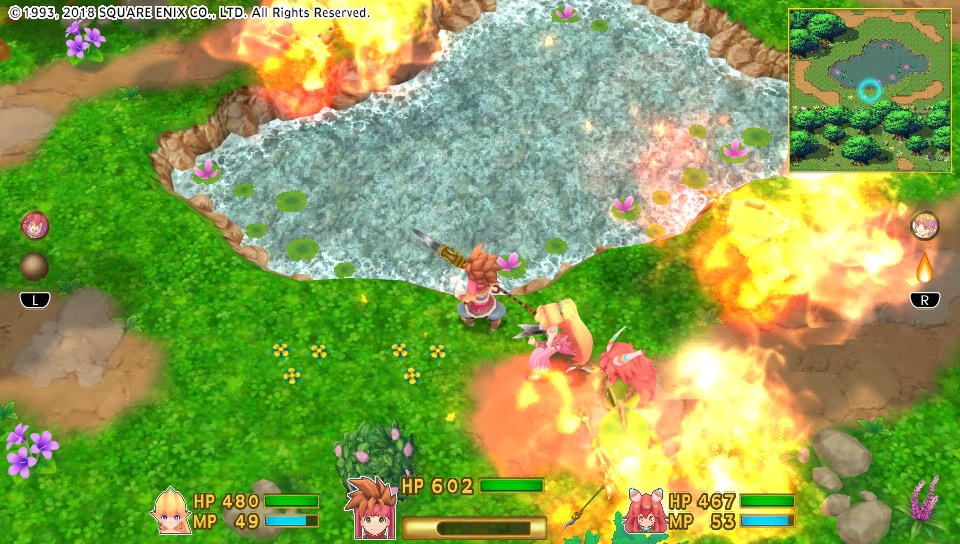
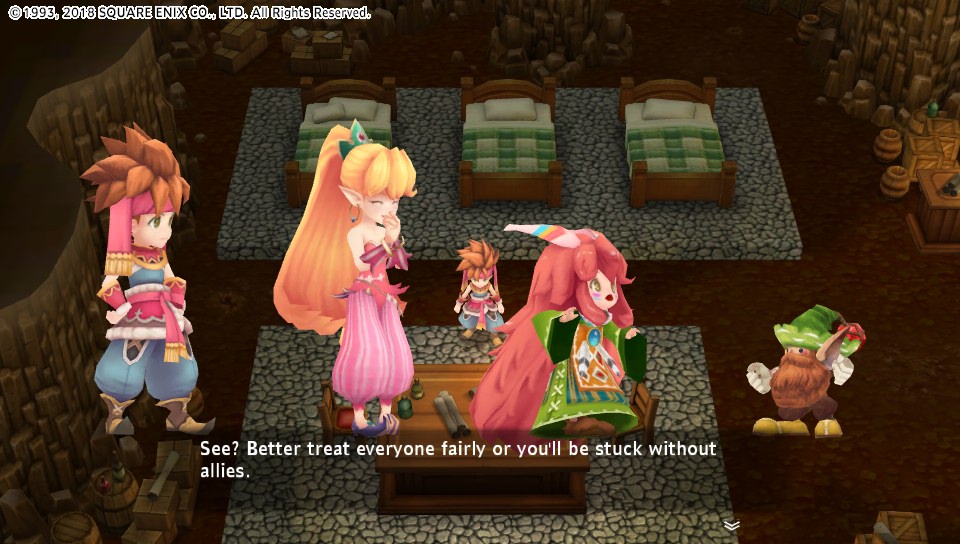
A remake of the legendary SNES RPG (which I've also played very long ago). Gamers have long been used to classics being shoddily revived in order to cash in on nostalgia; some examples are HOMM3 HD and Duke Nukem 3D: World Tour. Is Secret of Mana one of those? Well, yes and no. Clearly lots of effort has been put into the lively, colorful, 3D graphics, the voice acting for all characters and the remixed soundtrack. However, in cutscenes, the characters' mouth movements are either not in sync with the voices or not there at all. The acting itself is of average quality and some of the remixes sound like something a YouTuber who has just discovered FL Studio whipped out in a weekend (you can switch to the original soundtrack if you want to, at least). Combat got somewhat improved (more freedom of movement helps), but lots of the old quirks were inexplicably left in there - you can still just attack a single enemy repeatedly while he lies there and cannot do anything at all about his imminent death, for example. Which is where we come to the main issue: Secret of Mana was never really good. The remake had a choice to either fix what they can (ending with something quite different than SoM) or stay true to the original - and they mostly chose the latter (but the purists still hate the remake, so whatever). The most important problems of the SNES classic were kept - and the sad thing is, the remake could have chosen to fix some of them without much backlash, but didn't - let's check out some of those:
There is not much differentiating the weapons aside from longer or shorter range. It takes some serious grinding if you want to specialize in more than one as well; more than that - the higher levels are not always better, exchanging a strong side effect (say, confusing enemies) for a weak one like more damage against lizards. Couldn't they have made it so that you can choose to keep an upgrade or ditch it if you don't like it? Magic also has levels which you need to grind for, but you get some of the spirits late in the game so they end up being useless. You're unlikely to be using the low-level (and high MP cost) Lucent Beam when you already have a level 6 or so Blaze Wall (and the final boss happens to be weak to Lucent Beam), or the Sprite's MP Absorb which would be really good if it stole a high enough amount of mana. Not that it actually matters because the game's difficulty is a joke and a downgrade compared to the original; even the bosses don't feel much different from regular enemies so you don't have to care about their weaknesses. There is a significant difficulty spike in the Pure Land - but all this means is that one of your characters might actually die, and you can just revive them with the Angel's Grail or the Revivifier spell. The allowed item amount by default is 4 - like in the original - but can be increased to 10 in the options, worsening the casualization; there is also never a shortage of cash so you can always buy the best equipment, nullifying any strategy in choosing what to wear (not that less money would help, since there's usually only one correct equipment choice - the newest and best one). Charged attacks are still useless since they miss too much and the damage increase is small. AI is still shit. Annoying menuing is ubiquitous; the remake's shortcuts help somewhat but only two are available when it'd have been easy to create more. I could go on and on - long story short, Secret of Mana is a shoddy attempt to modernize a game that doesn't deserve it in the first place. If you expect anything more than being able to hit stuff with some cool animations and sometimes funny dialogue, you'll be disappointed with it. Not recommended.
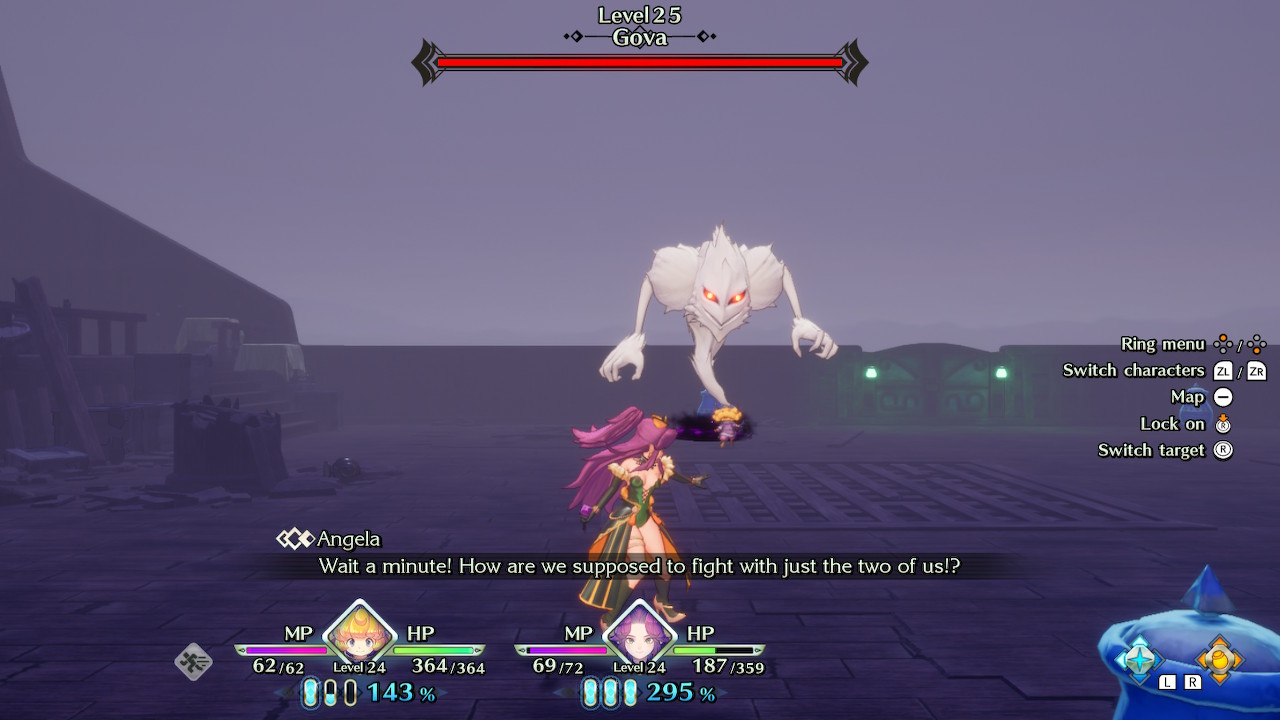
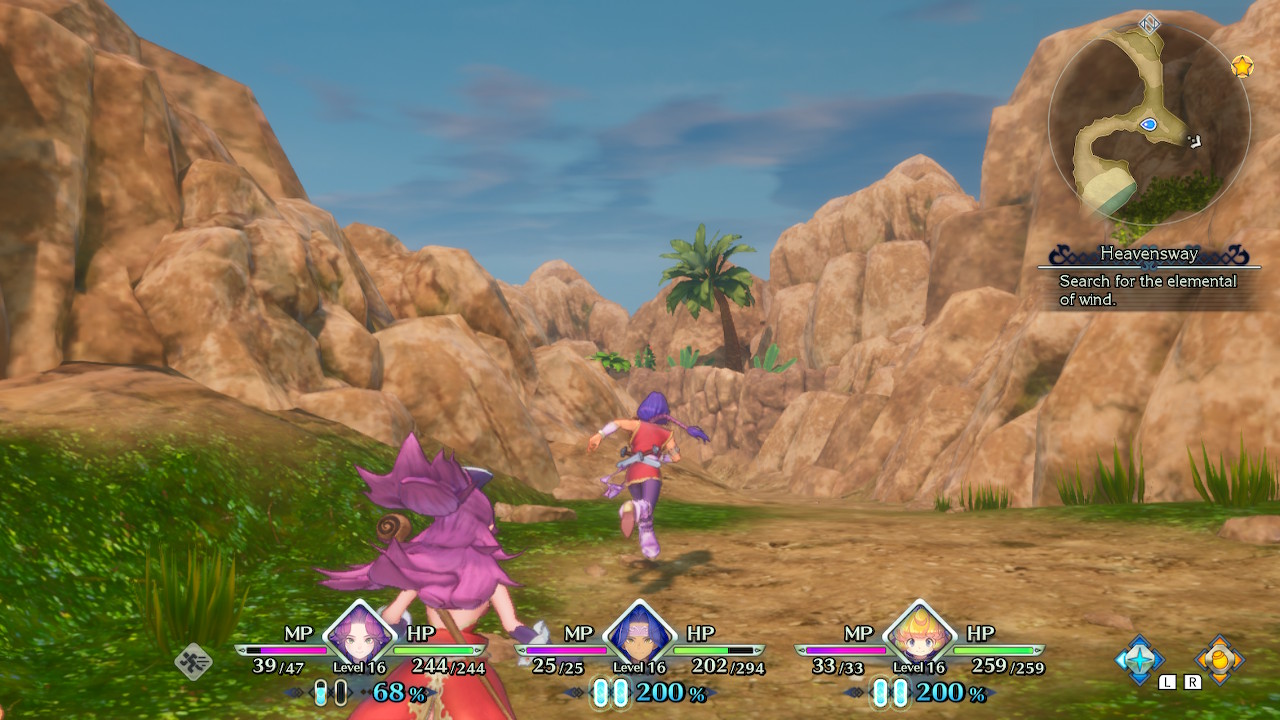
UPDATE: rewrote the review - game is worse than it seems. I've let too much stuff slide due to nostalgia and initial impressions. Read on:
I've been hyped for this game ever since it was announced. This is actually a remake of Seiken Densetsu 3, a Japanese-only Secret of Mana sequel which - unlike its predecessor - was actually a decent game. You could pick from 6 characters (each with a different storyline, stats, and skills), enjoy improved graphics, an extremely good soundtrack (compared to the lackluster SoM which had e.g the same battle theme for most bosses), as well as huge improvements to the equipment and spell systems (each character had their own weapon now, without the shitty leveling). There were even four different final classes available for everyone! Of course, the game still had significant flaws (might have been too ambitious for the SNES), so I was eager to see it get improved. How did Trials of Mana perform in this regard?
Well, it's been turned into full 3D (third person perspective instead of the weird top-down view from the SoM remake), with nice looking character models, scenery, actually properly animated (and skippable!) cutscenes. However, here we meet the first hiccup; despite the true 3D, you can only explore the world in ways the devs approved. Jump on this roof, but not that one; reach the treasure from this side, but not the other - even though they both look just as reachable. This is a great way to ruin immersion when you can't even jump over a little barrier or from small cliff (right after being shot out of a cannon and living). You quickly learn not to trust what you actually see since it's not a reliable representation of what the game does internally.
The 3D - of course - means a complete combat overhaul. Finally, you can avoid enemy attacks! However, there's still not much depth to the combat. Lots of enemy variety (armored knights, bats, disappearing ninjas, poison spitting slime, sorcerers), but the game is so easy that you don't have to care about the particulars. Simply mash the A button and finish with X if you want a stronger or area attack. Use overpowered class strikes to break armored enemies (though even if you fail to do that, there's not much consequence except they will take little damage until the armor is gone). A charge attack can also break the armor - and you can get stunned while executing it, but there's no real penalty and the time required to perform it is short enough that it doesn't matter. For the flying ones - just jump or use a spell. Mobs never do anything to bother you, really - and yet, the developers have also put fucking healing barrels all over the place - as if the game wasn't easy enough.
Let's move on to the bosses then. For the early ones nothing really changes except you might spend a few healing items - which are not only ubiquitous in treasure chests but also buyable en masse in shops (and money is plentiful). They are impressive presentation-wise, but only the few late game ones present any challenge at all (maybe starting from Zable Fahr, the last Benevodon). All bosses have weaknesses (which you're told while targeting them) but again, until the endgame they don't really matter. As with regular enemies, you can avoid the Big Bad's telegraphed attacks - which you could not in the original - and yet the difficulty has not been adjusted upwards to compensate for it. Some bosses have gimmicks such as traps or throwing around field stuff that you have to destroy in time - else you'll be hit with a strong attack later. Again, it all looks cool, but until the very end game doesn't make much difference.
I haven't yet mentioned the very good skill and class system in this game because it's almost completely wasted. Why bother painstakingly designing your party when you can button mash through the vast majority of enemies, anyway? But you do have that option, and in a properly designed game, Trials of Mana's system would fit very well. Upon leveling up, you can pick which stats you want to increase - and those will unlock different abilities. This (in theory) creates many playstyle possibilities for each party member. Funnily (or annoyingly) enough, some great skills are hidden behind stats that the particular character might not want (e.g Spirit for Hawkeye) - but yet will have to increase if he wants those abilities. So, you have to decide between getting the good skills OR the more useful stats, which is good design. Though the potential for customization before changing classes is small, later the possible combos can get quite involved (especially if you add Chain Abilities to the mix). For example, Hawkeye has an ability which increases damage to statused enemies by 30%. Other characters have spells or skills that can cause status effects too, so using those together is obvious. There are lots of fun spells - such as making the enemies smaller so they can be stomped on. Buffs, debuffs, elemental sabers that will get used only on bosses and can be replaced by cheap items if you lack the necessary characters. What a waste.
Worst thing about all this is it could have been easily fixed. Delete the casual healing barrels. Increase the price or decrease the availability of items (e.g only on certain days of the week - the current day / night system is yet another waste). Modify the enemies so that they can do more to disrupt you. Status is cool but again - healing items and magic are dime a dozen and there are also anti-status abilities now. It seems that - thanks to the skill system - our characters gained an opportunity to get stronger; but the enemies have stayed the same as in the original. They do have lots of abilities, but again, they can be almost ignored since they're so easily beaten. You can also run away from encounters - which some people recommend as a way to increase the game's difficulty. However, having to skip one of the main parts of the game just because the developers fucked up the design isn't my cup of tea. It also takes a long time to actually get away if the enemies detect you; but sometimes, you can be standing a meter away from them and they won't see you - and you can't hit them then! The battle only starts when the game decides it should, which is just a relic from old-style RPGs that has no business in this Action RPG.
To their detriment, the developers seemingly tried to stay as close to the original as possible - but as with SoM, purists will still find a reason to hate the updated installment. As for some other stuff, the voice acting leaves a lot to be desired. Remixed soundtrack is great - no duds unlike the SoM remake. Story-wise, the game stays faithful to the original, except the plots are fully resolved in the postgame. There are lots of convenience improvements - e.g the game tells you the full class specifications in advance, more shortcuts, good menuing, ability to skip most cutscenes, etc. It's too bad the modern gaming trend seems to be to tack on as much stuff as you can - and then make it all irrelevant; e.g the great class and skill system that ends up being mostly wasted, or the powering up / weakening of different elements during certain days (you can completely ignore it and not even notice). All in all - this game will be right up your alley if you just want to beat up mobs with some nice-looking combos and play around with interesting spells. There's not much to this game beyond the surface - even the usual RPG stuff like treasure hunting or talking to people is pretty barren (not even a sidequest in sight). However, Trials of Mana is fun and will likely keep you captivated until the end. Somehow though, a replay with another party setup doesn't seem appealing. Though it has improved a lot over the original, the core flaws are just too much. Changing the rating to Somewhat recommended.
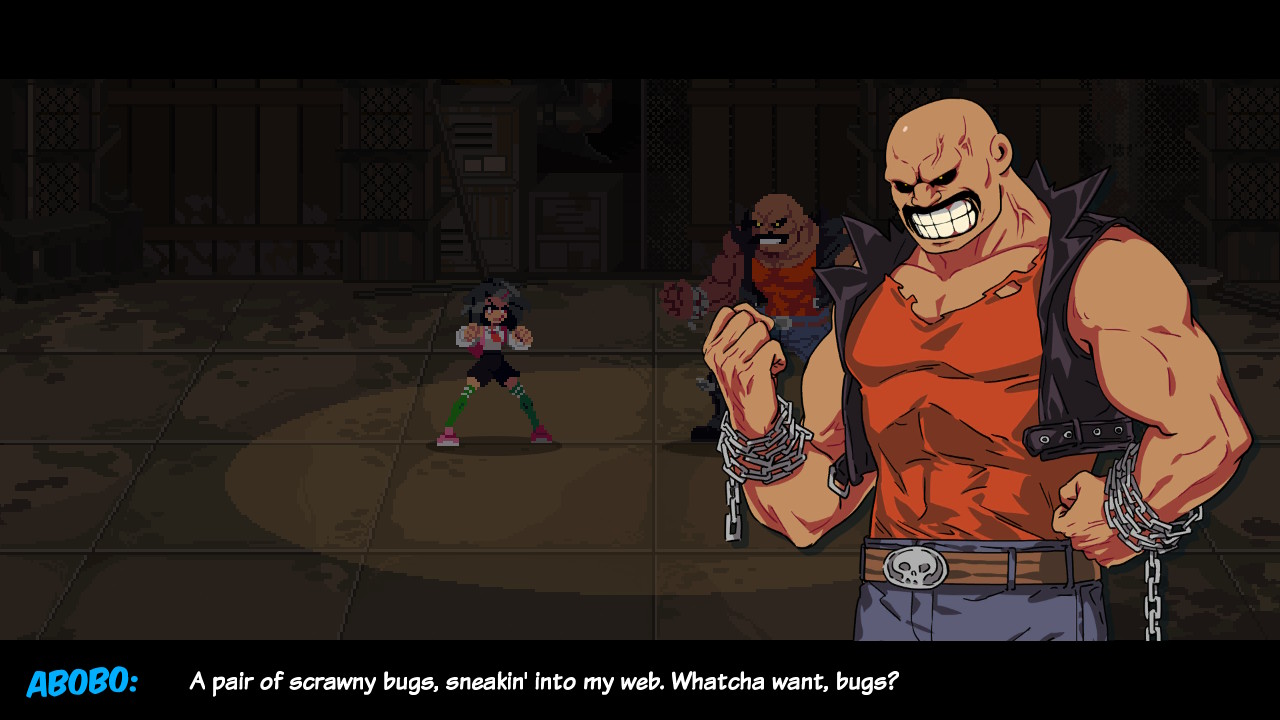
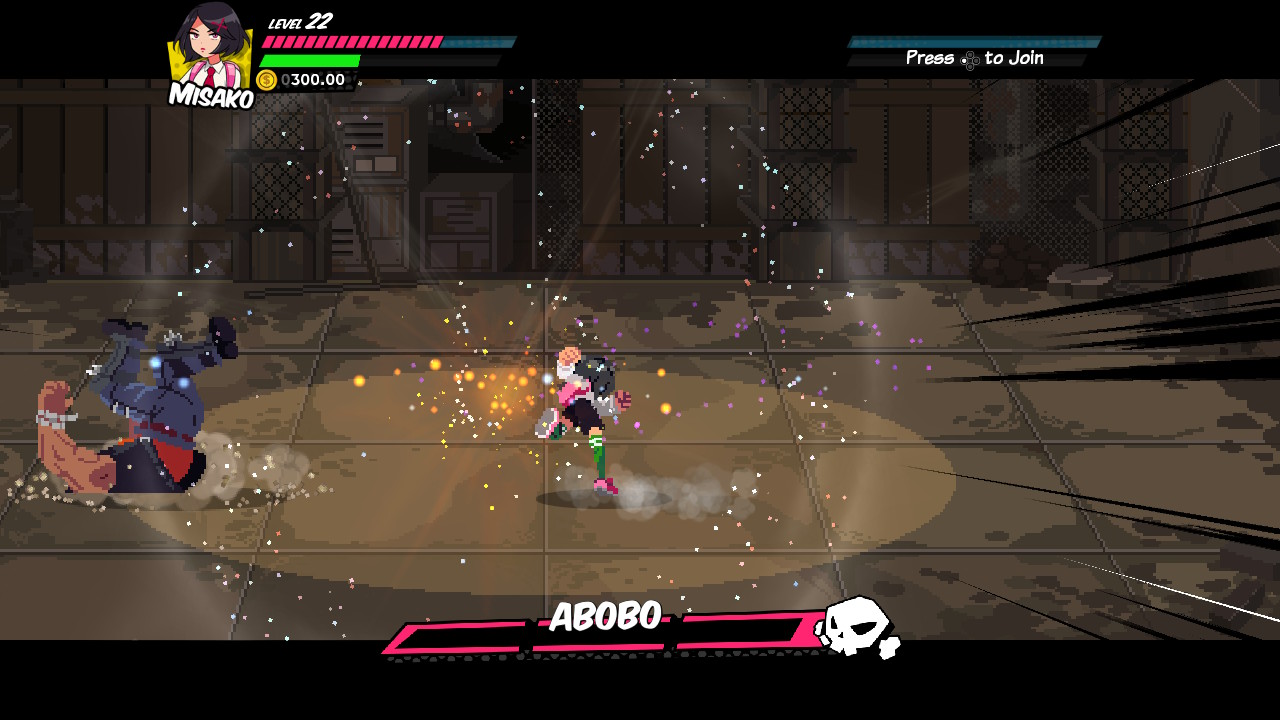

River City Ransom was one of my favorite games on the NES and clearly ahead of its time. River City Girls brings it to the modern age, this time with women as the fighters. How does it stack up to the legacy of the original, though?
River City Girls has massively improved over RCR in technical ways, as expected. The 2 enemy on the screen limit has been lifted, the AI is way better, there are many more areas to explore, more items, moves, animations, high enemy variety, nice cutscenes, voice acting, etc. However, how the game uses all that leaves a taste of disappointment in my mouth.
For example, let's talk about the moves. Each girl has a set of basic moves that are all unlocked after a few levels, so you can use them for 90+% of the game. There's also a dojo where you can learn additional moves at the cost of money. However, aside from looking cool, they're pretty useless since you can easily beat the game with just the default ones. There's also a problem with the controls, in that often, the same button is assigned to two different moves. In those cases, the move used will either be determined by context, or seemingly randomly (or I just haven't found the trigger). An easy example is the ground stomp - if you stand close to a fallen enemy, you can stomp on them for damage; but if you are not in the proper position, or the enemy is already getting up - you will instead use the headbutt move (assuming Misako), doing no damage and making yourself vulnerable due to long recovery time. The same issue exists with the dojo Suplex move, which throws the enemy backwards (compared to the default that does it forwards). The problem is - we can't actually pick which way the enemy will be thrown (or at least, the game doesn't tell you how to do it and I haven't figured it out). If we could, that would have a strategic use because the thrown enemy would hit the others. But as it happens seemingly randomly, the move is a waste of money; worse than that - since it's random, it will sometimes throw the enemy backwards when you want it forwards - which makes having the move worse than not !
After the first area (River City High) is cleared, mobs never really bother you even on hard difficulty. This is because the default moves are so strong and you've unlocked them all by then, and also that you can buy healing items starting from the second area. River City Girls prevents you from leaving certain places until trashing enough enemies in there - which is a great design decision, but doesn't matter much if you have a stack of healing items in your inventory (as you should). Even if you die, you lose only one fourth of your money (compared to River City Ransom's half), which makes death not carry so much weight. You can also buy equipment like clothes, makeup and stuff, but it's all pretty much useless, giving only a few% bonuses. Not that money is ever in demand (unlike in River City Ransom) since you're pretty much showered with it - for example, huge amounts for solving missions. And when you realize that only healing items are worth buying, money becomes almost irrelevant. There is a lot of enemy variety (RCR had pretty much none), but that doesn't really translate to a difference in strategy (similar issue as Trials of Mana).
What about the boss fights? Again, they're cool technically - concept, animations, voice acting, etc are all on point. But gameplay-wise, they're absolutely terrible, in my opinion. They're an example of bullshit difficulty - most of them (I think all except Misuzu, the first one) have a bunch of magic moves while all you have is human moves. This wouldn't be so bad if you could actually hit the bosses - but you can only do that at arbitrary points during the fight. Once they start doing their magic moves, they're suddenly immune without any in-game explanation or a way to detect when they are vulnerable. Though it's clear the devs were trying to be ambitious (e.g Noize's Guitar Hero-style minigame is creative), the boss fights are long and boring and mostly boil down to spamming healing items and trying to get a hit here and there. You could say I just suck, but I beat Cuphead recently and that game does difficulty much better!
I can't fault River City Girls in presentation. Story is pretty basic, but much of the dialogue is good and the ending is funny. UPDATE: however, after you unlock the additional characters, the game still pretends you're playing the default ones (story-wise), which is extremely annoying and shows lack of care. I can think of a bunch of ways to solve this problem, including just removing the non-applicable dialogue if you're lazy. But the best way would be making those characters work with their own story (forgive me, I'm trying not to spoil shit here). The soundtrack is amazing, especially the ones with vocals. The move sound effects and animations make them feel impactful. But all that has to take a backseat to the gameplay, and here River City Girls isn't doing as good as I think it should. Though beating up people is extremely fun, and the game did have some good design decisions in it (such as being able to recruit enemies) - with several core flaws (money not being worth much, weak boss fights, the meaninglessness of death, wasted enemy variety, lack of proper story for the unlockable characters) I cannot give it a better rating than Somewhat recommended.
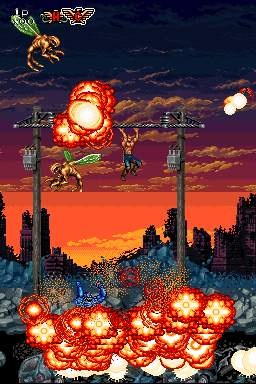
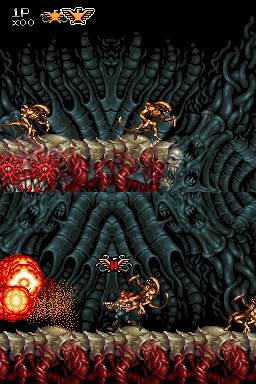
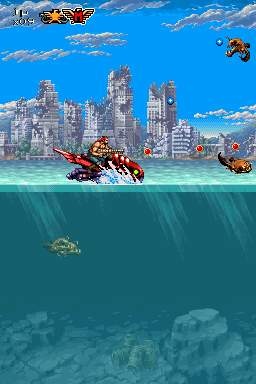
Maybe you are wondering why I haven't reviewed a game in so long. Well, it's because I was playing this and couldn't beat it. Finally, I got the monkey off my back today and can start to describe my experience.
First of all, this is definitely the hardest game I've ever played. It took me many months (maybe a year) and likely hundreds of tries to finally come out on top of it - and this is on Normal difficulty! I shudder to think what Hard feels like. Anyway - if you've never played a Contra game - let me explain how it works, and why it's so difficult. You get shot? You die. You jump into a hole? You die. An enemy touches you? You die. And there are lots of different enemies coming at you from every corner (or even turrets randomly appearing from the ground), you're pretty much forced to keep running and shooting, else you get swarmed by a barrage of bad guys and their bullets. What are the consequences of dying? Well, you lose a life and respawn - but without your current weapon, which is the key to this game. See, the only thing that makes Contra 4 even managable at all are the strong weapons you can pick up.
Just getting the Laser or Spread Gun greatly increases your fighting capability. But every weapon also has a possible upgrade, which turns them into a German Shepherd compared to the Chihuahua that is the Rifle which you end up with when you die. And this Chihuahua won't defend you from anything, which means you die and die even more. All that can save you then is a weapon drop that hopefully appears soon. If you are stuck with the Rifle during a boss fight, better say your prayers. This really turns Contra 4 into a game of desperately avoiding death. I've had runs where everything went well until that one unfortunate bullet that hit me, or a bad jump which took away my weapon and made me vulnerable. Then - since the Rifle is so useless - I got overwhelmed by the enemies and kept losing life after life. See, there are some sections of the game where being stuck with the Rifle is pretty much a death sentence - such as the Factory's boss where you just can't deal enough damage to squeeze it. Or the Alien Hive level where for a long time you don't get a weapon drop, and the one you get the earliest (Flamethrower) is pretty weak. The fact that you can have two weapons at once provides a little mitigation; for safety, you can even keep using the Rifle at particularly dangerous sections - then, when you die, your strong weapon is kept. Still, due to this issue, Contra 4 requires extreme concentration at all times.
So, how not to die? Again, play like a speedrunner - keep running and shooting. A grenade to the face will make you learn the hard way that you just don't stop in this game unless you found a really good spot. It also helps to learn the level, because the enemy positioning can be bullshit sometimes. And here we come to the most important problem of this game, IMO. See, Contra 4 is really a game of memory, mostly. Even the turrets coming out of the ground and immediately shooting at you (this is in the first level) will confirm that. If you are a first-time player, you will fucking die then - unless you have godly reaction time and the ability to immediately form a brain map of the positions of other enemies on the screen. But, that eventually burns you out - and you'll need to do it many times. Another such moment is during the first boss fight, where - to avoid being hit by its cannons - you need to stand to the left of the screen. But, an enemy just so happens to run from that side right at the start of the fight, and - if you don't know it - you will die. You might be able to instinctively press the jump button, but so what if you jump right into the boss' bullet? Fortunately, there's very little randomization in this game - enemy's positions are mostly hardcoded. Don't get me wrong - it's not all memory - but it helps significantly. The game, also, does eventually kind of fix this issue with its Challenge Mode that you unlock after you beat the regular one. There, you are thrown into the levels you know and love, but have to play them in different ways such as speedrunning, pacifism, or being stuck with a certain weapon. The more challenges you complete, the more additional content you unlock (such as the ability to play the original Contra!); there are 40 ones in total. Edit: fuck it, this mode is amazing - probably better than the actual game.
So what makes Contra 4 so good? After all, I kept playing it even after getting my ass kicked over and over. I pretty much dropped all other, more advanced games to focus on it. See, this game is extremely simple - anyone can pick it up in a minute. But to master it is something else entirely. Many other games (especially RPGs) require you to learn a bunch of stuff just to begin playing - battle mechanics, items, menuing, characters, etc. This can discourage someone who just wants to have some fun. Contra 4 has hit the jackpot here - the game is extremely addictive right from the start until the final boss' very last breath. And eventually, the memorization "issue" turns into an advantage - you learn the level so well, you know when to jump, shoot, what paths to take (swim or use the bridge?), which weapon to pick up and when, etc. You become the master of conquering aliens, and you are proud. But even then, Contra 4 is so hard you still need to pay attention. And there are sections where memory will barely help you - like with the skeleton fish jumping out of the water in the Ocean level. The audiovisuals support the experience - soundtrack is lively, weapons feel impactful and there are lots of explosions. Level design is good and varied, with lots of different enemies. In addition to regular platforming, you will be stuck into bases where the camera flips towards fake 3D; you can also do fun stuff like ride watercrafts.
I'd really like to give this game the highest rating; and if the length of time spent on it was the only criterion, it'd easily earn it. But it isn't, and it has enough small flaws to drop a level. Aside from what I mentioned earlier, a really annoying issue is that it's easy to accidentally pick up a weapon drop you don't want - and you can't get the old one back. This can seriously ruin a playthrough, especially if your other weapon is the Rifle. Another one is how, you can't navigate back to the earlier parts of the level - and if it's a vertical one (like the latter half of Laboratory) you will just die trying to jump down. Then, some bosses can only be hit at specific points, without a tell (similar issue to River City Girls - but worse since death is so costly). Let me guarantee, though, that you will forget about all this when in the heat of trying to save the world from alien invasion. Actually, fuck it - these flaws are extremely small, and don't really matter. HEAVILY RECOMMENDED!
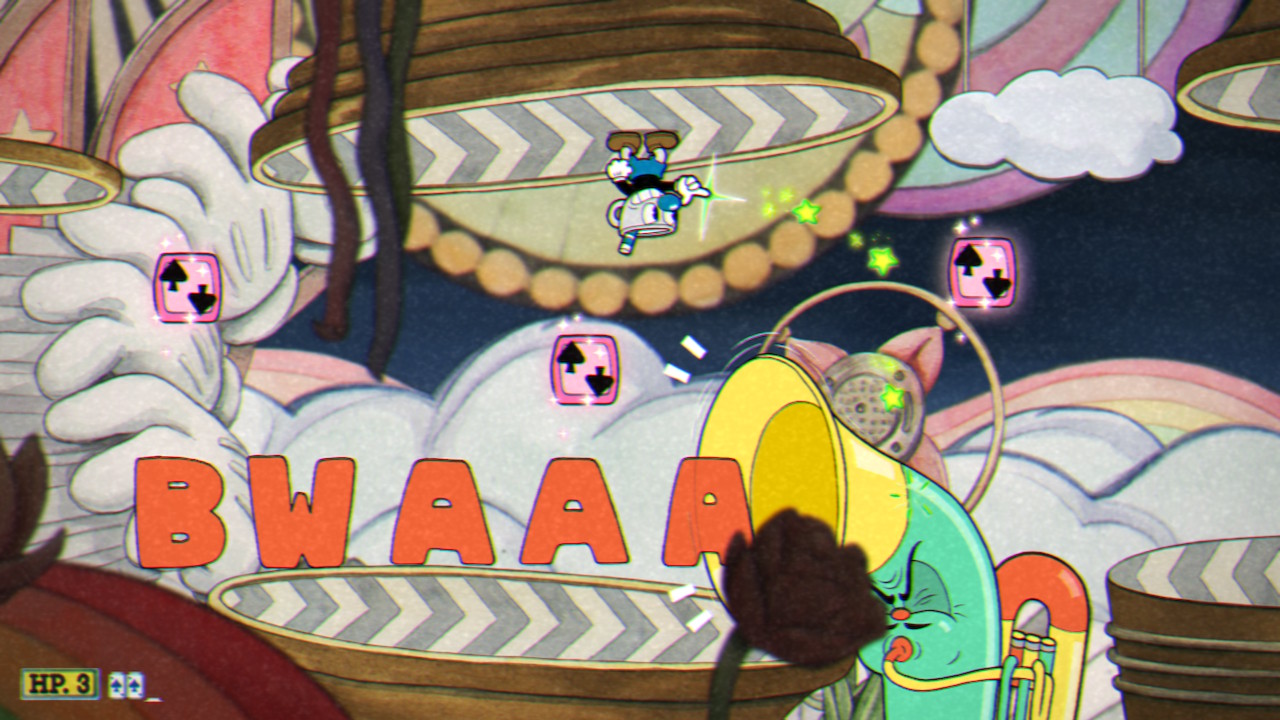
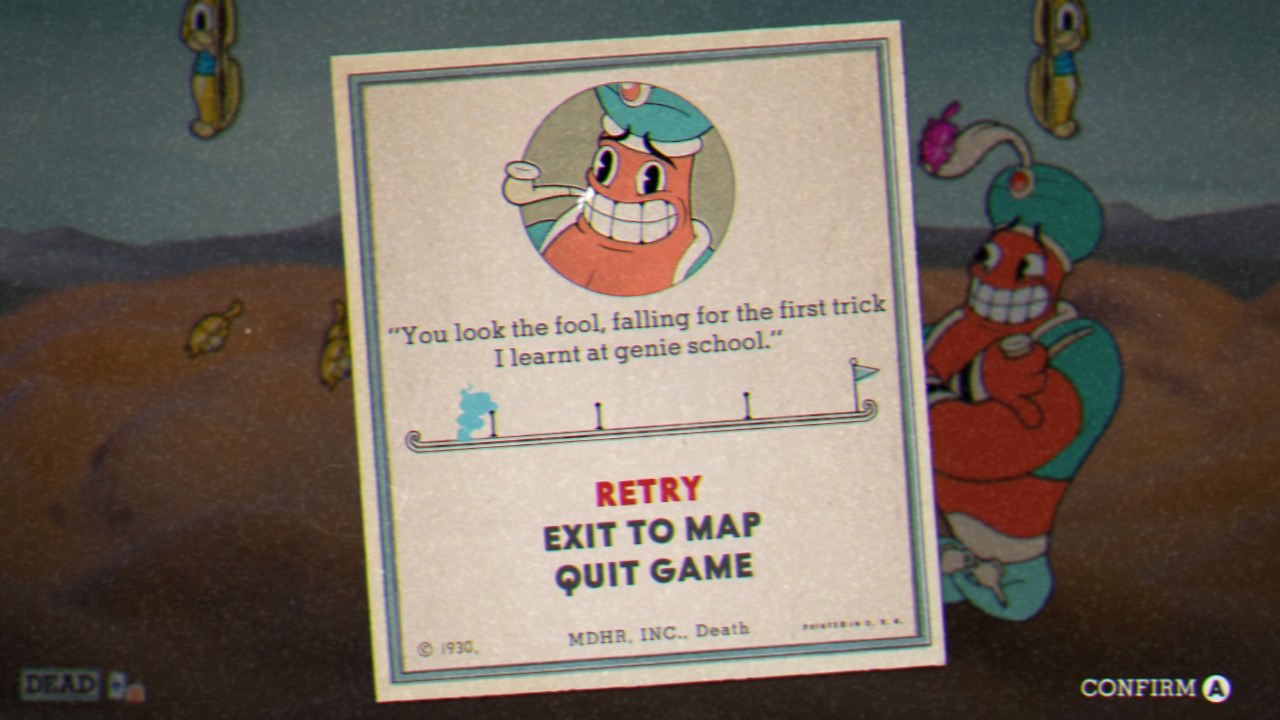
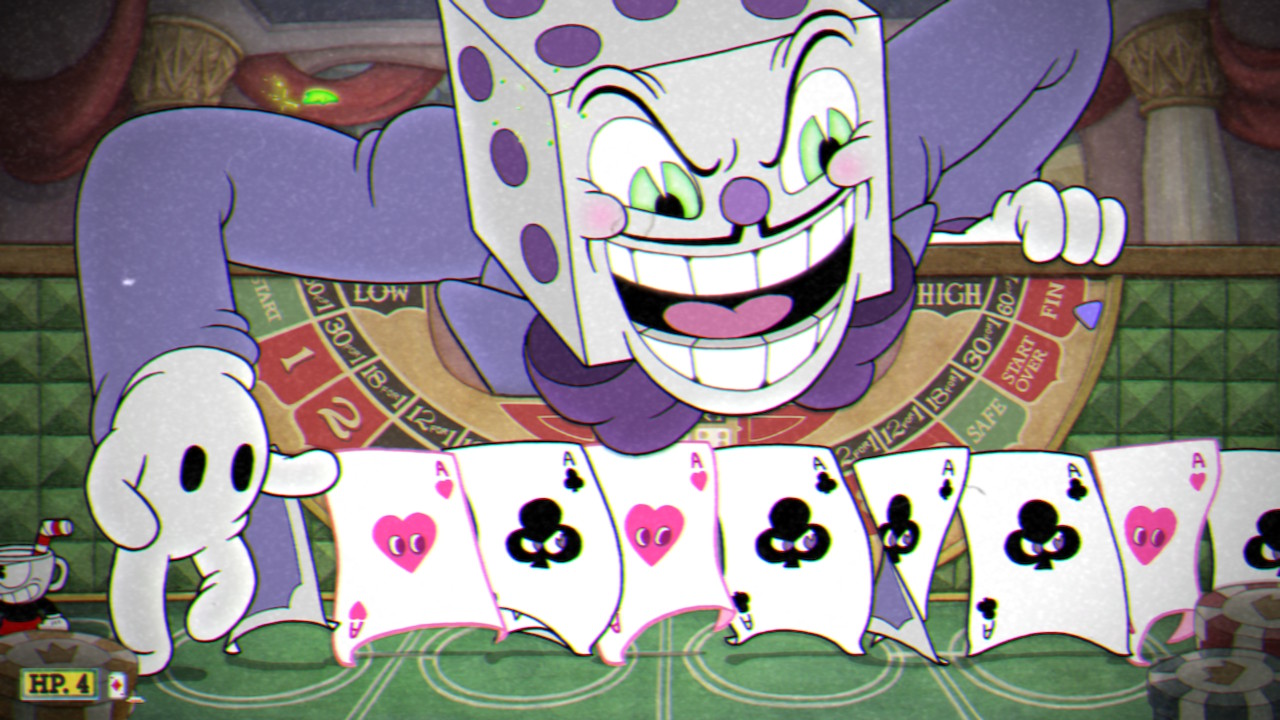
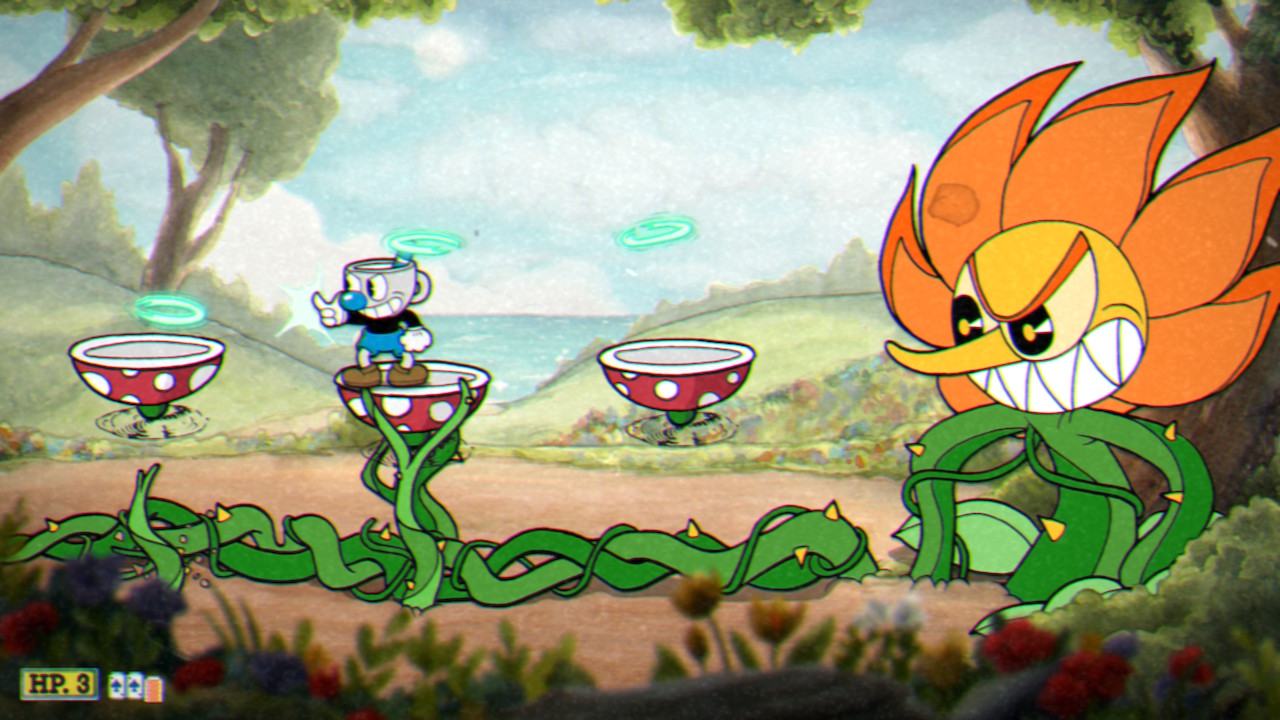
This is a delayed review, that I didn't write when I should have, because I was lazy. But the game is so good that I have to. So, well, Cuphead is mostly about fighting bosses (with periodic breaks for platforming levels you know from all the Mario games and similar) - but it squeezes out everything possible from this style.
Every boss has a few forms, which will require different strategies. You choose which weapons to bring to each fight (which you first have to buy - this can modify your playthroughs somewhat; certain bosses will be harder with the lack of specific weapons). You can only have two weapons per fight, which requires you to strategize and punishes you for bad choices. The same applies to charms - non-weapon power-ups that you can only have one of (these include additional hearts, invulnerability dash, etc). And so, the issue that many games have, where there are only one / two overpowered weapons and the rest are useless - or where the game is so easy that it doesn't matter what you use - evaporates.
Because Cuphead is actually extremely hard. Though the first few bosses might give you the illusion that it isn't, even they will challenge you if you're not good enough; and the second world bosses - especially Grim Matchstick - will kick your ass. There is really good progression here, though - so you're not thrown into the jungle right at first. Do not expect any handholding here, however - you have to beat all the bosses to progress to the next world. The really hardcore players can also try to get the best ranks, which requires winning without losing HP, as well as hitting enough pink projectiles (which can be used for bonuses during fights, but can also damage you if you don't perform the double-hit on them).
This game really doesn't have any flaws. There is high (but fair) difficulty with good progression (and it's much less of a memory game than Contra 4), good balance between weapons, great cartoony art style, good soundtrack, great diversity in bosses (the game doesn't take itself seriously, so a bee can turn into a plane, etc. It all fits well together, though), good story that explains why you are doing what you are doing but stays out of your way, great dialogue (bosses will mock you for losing to them, and every one of them has a few lines of mockery depending on the moment of your demise), breaks for exploration and some additional modes. I have nothing to complain about here, which never happens for me. It is one of the best games I've ever played, for sure. By the way, there is a DLC that I haven't seen, so this review is for the version without the DLC. HEAVILY RECOMMENDED!